422125901731114656
Category: Tips
-

Maximizing Workplace Safety: The Essential Guide to Machinery Safety Guards
In the bustling world of industrial operations, machinery safety guards stand as the unsung heroes, offering a robust shield between the operators and potential hazards. These pivotal components of any industrial workspace not only ensure the well-being of your workforce but they also amplify productivity by minimizing mishaps. However, a comprehensive understanding of these safety guards is often overlooked, leading to compromised safety standards.
This blog will delve into the intricate world of machinery safety guards, highlighting their importance, functionality, and the precautions required to enhance industrial safety. By unraveling the complexities of these defensive apparatuses, we aim to foster a safer, more efficient industrial environment that prioritizes employee security above all else.
The Importance of Safety Guards
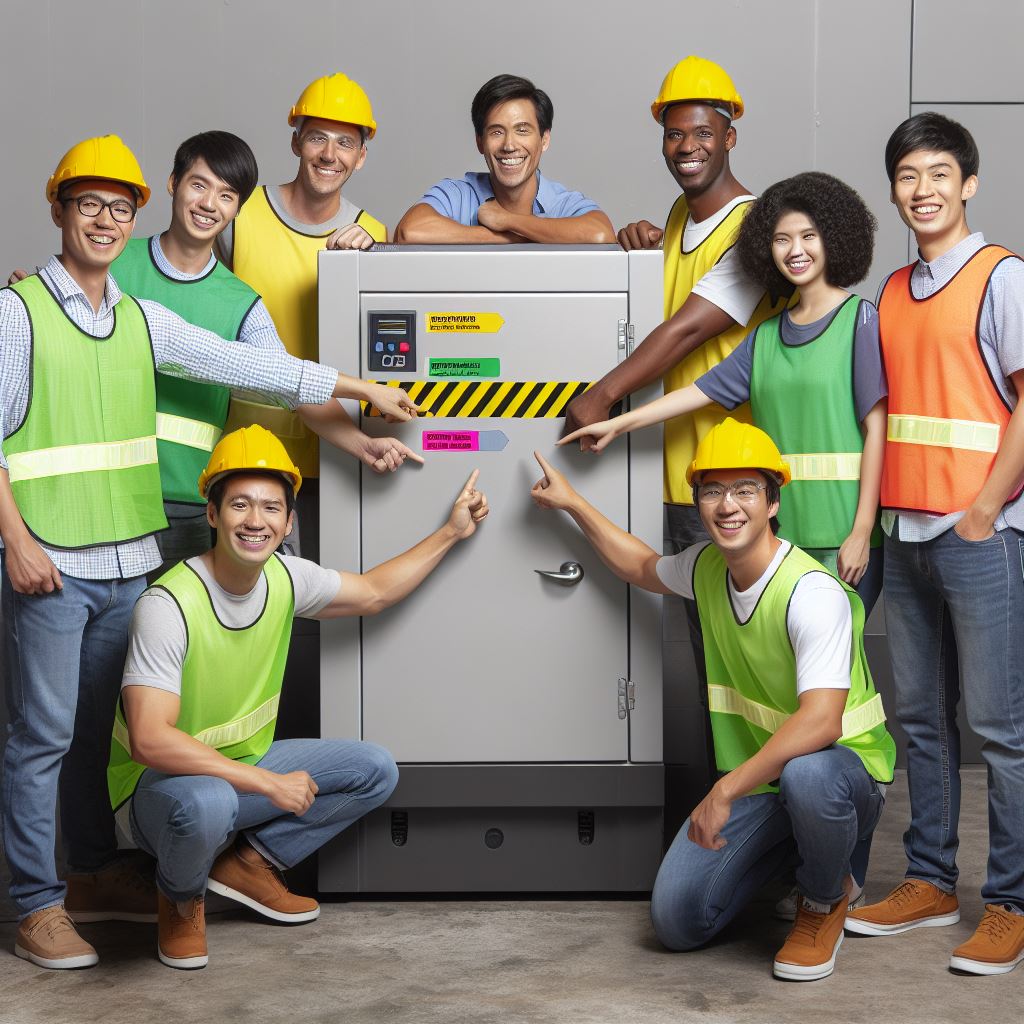
In the realm of industrial operations, machinery safety guards are not just an optional accessory; they form an integral part of the safety protocol. Imagine playing a high-stakes game of chess without a queen. That’s akin to operating heavy machinery without appropriate safety guards.
They function as the protective shield, intercepting any potential harm that could befall the operator. Machinery safety guards are the unsung heroes of industrial safety. They quietly do their job, reducing risks and preventing accidents, much like a vigilant goalkeeper in a soccer match, protecting the goalpost from any unwelcome intrusions.
They form the first line of defense against potential hazards that can result from machine operation such as flying debris, sparks, or even accidental contact. Their importance transcends mere physical protection. The psychological reassurance that these guards provide to machinery operators is priceless.
Knowing that a robust safety measure is in place allows workers to focus on their tasks without being burdened by safety concerns. This not only enhances productivity but also fosters a safe and secure work environment. In essence, machinery safety guards are the stalwart knights of industrial safety, silently standing guard and ensuring that the machinery kingdom operates smoothly and safely.
Investing in them is not just a regulatory requirement, but a commitment to the well-being of your workforce. So the next time you see a piece of machinery, remember to acknowledge the steadfast guard that stands by it, protecting and serving.
Preventing Accidents with Guards
Implementing machinery safety guards is a proactive approach to creating a safer work environment. These protective barriers serve as the first line of defense, shielding personnel from potential hazards associated with moving parts of machinery. Not only do they protect workers from inadvertent contact, but they also prevent flying debris, sparks, and splashes of hazardous materials.
By employing machinery safety guards, businesses can significantly minimize the risk of accidents and injuries, fostering a culture of safety while also complying with regulatory standards. Indeed, the use of safety guards is a mark of a responsible, safety-conscious organization.
The Role of Guards in Compliance
Machinery safety guards play an integral role in maintaining compliance with workplace safety regulations. These unsung heroes of the factory floor do more than just prevent accidents; they are an essential part of a much larger system. By effectively shielding workers from the raw power of industrial machinery, they ensure that businesses adhere to stringent safety standards.
Hence, these humdrum-looking machinery safety guards are the silent sentinels, ensuring a harmonious balance between productivity and safety, while keeping the compliance inspectors content. So, let’s tip our hard hats to these guardians of compliance and safety.
Types of Safety Guards for Machinery
Understanding the Different Types of Machinery Safety Guards Machinery safety guards are an essential component of any industrial or manufacturing setting. They are designed to protect operators and other employees from potential hazards associated with machinery operation, such as moving parts, flying debris, sparks, and excessive noise. However, it’s important to note that not all machinery safety guards are created equal.
There are different types designed for specific applications and machinery. The most common type is the fixed guard, which is permanently attached to the machine. These guards are typically used in areas with minimal operator interaction, providing a robust and permanent barrier between the operator and the machine parts.
Adjustable guards, on the other hand, offer flexibility. They can be moved or adjusted to accommodate different sizes of material or to allow closer proximity to the machine during setup or maintenance tasks. Then there are interlocked guards, designed to shut off or disengage the machine when opened or removed.
This type is ideal for machinery that requires frequent access during operations. Lastly, we have self-adjusting guards. These automatically adjust to the size and shape of the material being inserted into the machine, offering optimal protection without compromising productivity.
Choosing the right machinery safety guards involves a keen understanding of your machinery, processes, and the tasks performed by your operators. By making an informed choice, you can ensure a safe and efficient work environment, safeguarding both your employees and your business.
Fixed Guards: An Overview
Fixed guards are the unsung heroes of machinery safety, acting as steadfast barriers between workers and potential hazards. These stalwart protectors, commonly known as machinery safety guards, are a crucial aspect of any industrial work environment. They are designed to provide an impenetrable shield, ensuring the moving parts of any machinery remain out of harm’s way.
Fixed guards offer an effective, no-nonsense solution to safeguarding employees, reducing downtime caused by accidents, and fostering a culture of safety within the workplace. Indeed, a well-guarded machine is a testament to the value placed on human life in the industrial setting.
Interlocked Guards and Their Uses
Interlocked guards are an invaluable device in the realm of machinery safety, acting as vigilant gatekeepers for users. These guards are ingeniously designed to automatically shut off or disengage a machine when the guard is opened or removed, ensuring the safety of operators. Often utilized in manufacturing and industrial settings, they serve to prevent accidents and injuries that could result from contact with moving parts, flying debris, or sparks.
Thus, interlocked guards are not just a smart addition to your machinery, but essential assets for maintaining a safe and productive working environment. This ingenious invention is indeed a testament to the adage, “Prevention is better than cure.”
Adjustable Guards: Pros and Cons
Adjustable machinery safety guards are an indispensable component in any industrial workspace, ensuring the safety of employees while enabling efficient operation. These versatile fixtures offer a host of benefits, including customization to suit varying machine sizes and types, improving accessibility and maintenance ease. However, they also present some drawbacks.
Their adjustability can potentially compromise safety if not properly managed and they may require frequent checks to ensure optimal functioning. Despite these challenges, the benefits of adjustable machinery safety guards far outweigh the cons, making them a worthy investment for any business prioritizing worker safety and operational efficiency.
Installation and Maintenance of Guards

Section Title: The Intricacies of Installing and Maintaining Machinery Safety Guards Machinery safety guards are the unsung heroes of the industrial workspace, silently protecting employees from accidents and injuries. These vital components are essential to maintaining a safe and productive atmosphere, but their installation and maintenance is not always as straightforward as it may seem. Installation of machinery safety guards requires a keen eye for detail and a deep understanding of the machinery’s operational mechanisms.
These guards must be positioned to provide maximum protection without interfering with the machine’s functionality. The process demands precision, patience, and a high degree of technical knowledge. Once installed, the real work begins.
Regular maintenance of these safety guards is pivotal to their efficiency. This involves periodic inspections to check for wear and tear, timely replacements, and ensuring that they remain securely affixed to the machinery. A poorly maintained safety guard can be just as hazardous as not having one.
Investing time and effort in the proper installation and maintenance of machinery safety guards is not just about compliance with safety regulations. It’s about creating a workspace that prioritizes the well-being of its people. After all, a safe workplace is a productive one, and machinery safety guards are at the heart of this equation.
Effective Installation Techniques
Installing machinery safety guards effectively requires meticulous planning and execution. It’s not just about bolting a barrier in place, but rather, carefully assessing the machinery and understanding the potential risks. This includes identifying moving parts, pinch points, flying debris, and other potential hazards.
Once these risks are identified, the right safety guards can be selected and strategically installed. This might involve using adjustable or self-adjusting guards, fixed guards, or interlocked guards, depending on the machine’s design and function. The key is to ensure maximum safety without hampering the machine’s operation – a clever balancing act that requires expertise and precision.
Maintaining Safety Guards
Ensuring the longevity and effectiveness of machinery safety guards is imperative in creating a secure working environment. Regular inspections, timely replacements, and comprehensive cleaning are just a few maintenance practices that can enhance the safety quotient. A well-maintained safety guard not only safeguards the machine but also boosts the productivity of the workforce.
Thus, the significance of machinery safety guards cannot be overstated. Keeping them in top-notch condition is not just a safety measure, but a smart business move. After all, a stitch in time, especially in the realm of machinery safety, indeed saves nine!
Safety Guards: Legal Requirements
Compliance with legal requirements is crucial when it comes to the installation and use of machinery safety guards. These essential devices are not just a savvy investment for safeguarding your machinery; they serve as a protective shield for your workforce, preventing accidents and potential liability. According to the Occupational Safety and Health Administration (OSHA) in the United States, employers are legally required to provide their employees with a work environment free from recognized hazards, which includes the provision of machinery safety guards.
These guards are designed to prevent contact with dangerous moving parts, control hazardous energy, and protect against flying debris. In the United Kingdom, the Provision and Use of Work Equipment Regulations 1998 (PUWER) stipulates that all machinery should have suitable guards in place and maintained to ensure safety. The Canadian Centre for Occupational Health and Safety also emphasizes the importance of machine guards in preventing worker injuries.
Remember that each machine may require a specific type of guard, designed to provide optimal protection while not hindering the machine’s operation. It’s not simply about having guards in place; it’s about having the right guards, correctly installed, and routinely inspected. In a nutshell, machinery safety guards are not just a box to tick on your compliance checklist.
They are a testament to the value you place on human life and well-being, a silent reminder of your commitment to safety. So, don’t just guard your machines; guard the heart of your operation – your people.
Frequently Asked Questions (FAQs)
What are machinery safety guards?
Machinery safety guards are protective devices designed to prevent contact with moving parts of a machine, thus ensuring the safety of the operator and other workers in the vicinity.
Why are machinery safety guards important in an industrial setting?
Machinery safety guards are essential in an industrial setting to protect workers from potential hazards, such as cuts, burns, or crushing injuries that can occur due to contact with moving parts. They also help prevent accidents that can lead to equipment damage and work stoppages.
What are the different types of machinery safety guards?
There are several types of machinery safety guards, including fixed guards, interlocked guards, adjustable guards, self-adjusting guards, and perimeter guards. The type of guard used depends on the machine and the nature of the task being performed.
How do I ensure that machinery safety guards are being used effectively?
To ensure effective use of machinery safety guards, regular inspections and maintenance should be conducted. This includes checking for damage, ensuring the guard is correctly fitted and is not interfering with the operation of the machine, and training employees on the importance and correct use of the guards.
Are there any standards or regulations regarding machinery safety guards?
Yes, there are numerous standards and regulations regarding machinery safety guards. For example, the Occupational Safety and Health Administration (OSHA) in the U.S. has set specific requirements for machine guarding in the workplace. It’s crucial for businesses to comply with these regulations to ensure worker safety and avoid penalties.
How can machinery safety guards impact productivity?
While some may view machinery safety guards as a hindrance to productivity, the opposite is actually true. By preventing accidents, they can reduce downtime caused by injuries and equipment damage. Furthermore, they can enhance worker confidence, leading to more efficient operation of the machinery.
Conclusion
Machinery safety guards are like the unsung heroes of the industrial world, discreetly ensuring the safety of operators and protecting the machinery from potential damage. They are the knight in shining armor for the damsel in distress, the superhero to the city in danger. Always remember – the absence of a safety guard may result in a thrilling story of survival, but its presence guarantees a long, uninterrupted story of productivity and safety.
So, let’s raise a wrench to these silent guardians, these watchful protectors – our safety guards!
-
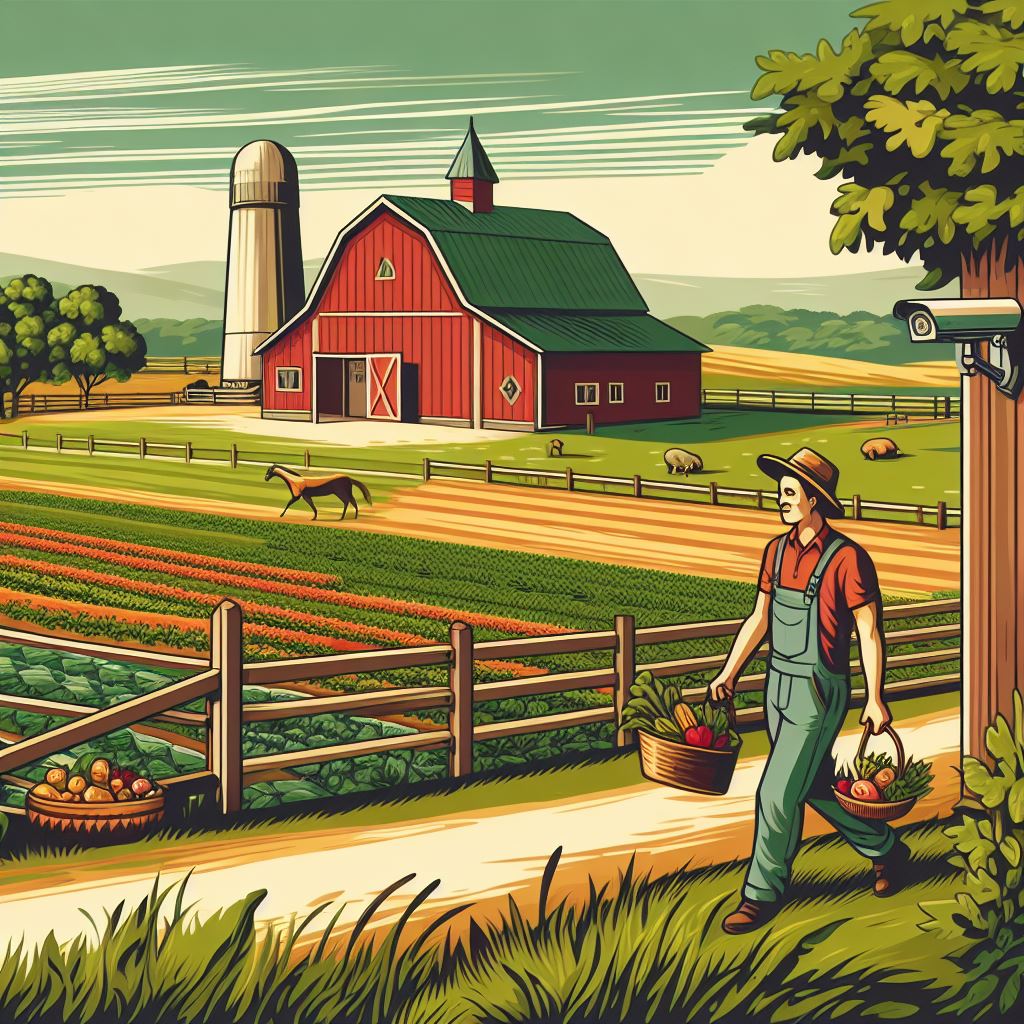
Beyond Security: Other Uses For Farm Surveillance Cameras
In an era where security is paramount, Farm Surveillance Cameras have become a must-have tool for every modern farmer. They not only provide peace of mind but also offer effective monitoring solutions to enhance productivity and safety around the farm. Whether you’re looking to curb livestock theft, monitor farm activities, or simply keep an eye on your property, farm surveillance cameras are your reliable allies.
In this comprehensive guide, we delve into the world of farm surveillance cameras, providing you with invaluable insights to help you make the most of these essential farming tools. So, let’s embark on this journey of discovery, exploring the best surveillance solutions for your farm.
Importance of Farm Surveillance
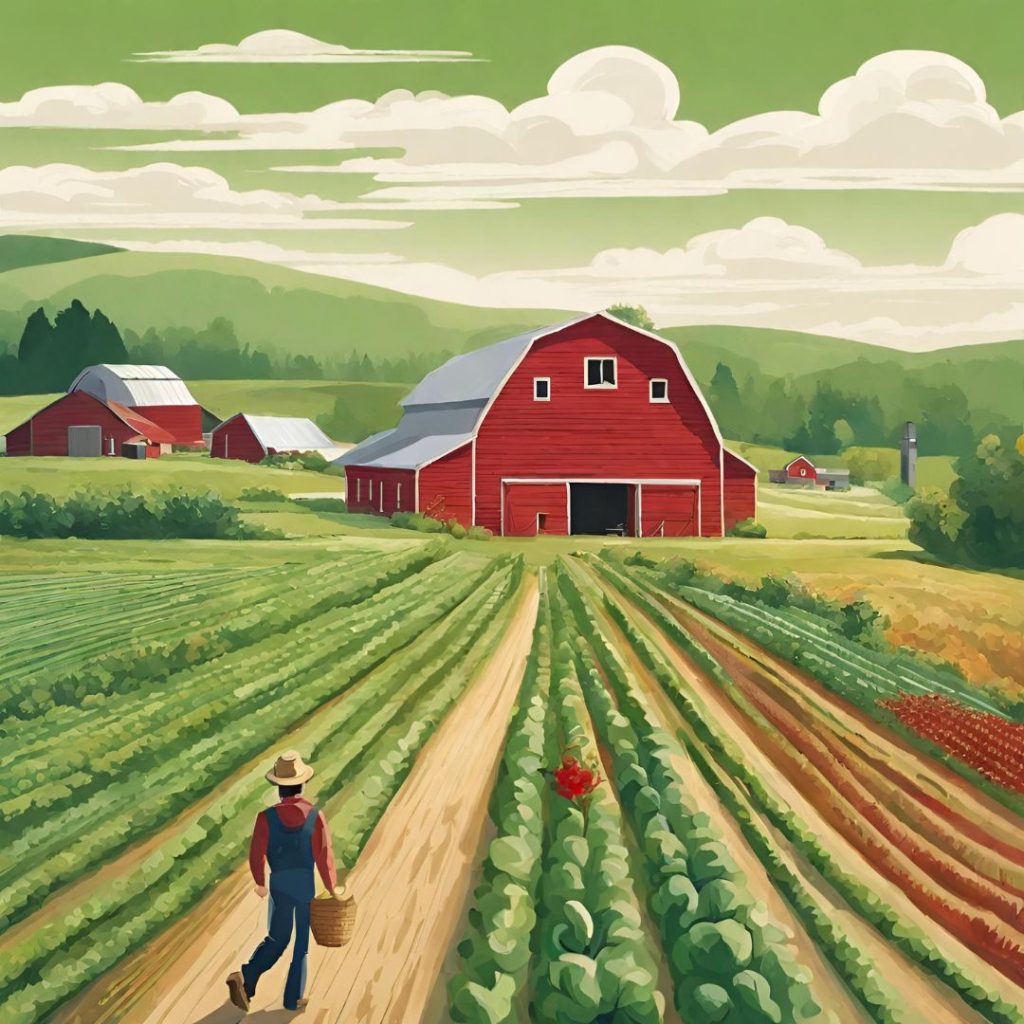
The agricultural sector has always been an integral part of our society, providing sustenance and livelihood to countless individuals. However, with the rise of various threats such as theft, vandalism, and even unpredictable weather, there is an ever-increasing need to safeguard our farms. This is where the role of farm surveillance cameras comes into play.
Farm surveillance cameras provide an extra layer of protection to your agricultural property. These technologically advanced tools offer real-time monitoring and data collection, enabling farmers to keep a close watch on their crops, livestock, and equipment. With farm surveillance cameras in place, any unusual activity can be detected promptly, mitigating the risk of potential losses.
Moreover, these cameras also serve as a deterrent for would-be trespassers or livestock predators. The presence of surveillance cameras can discourage unlawful activities, ensuring the safety and well-being of your farm. In the modern farming landscape, where technology is increasingly employed to optimize operations, farm surveillance cameras are no longer a luxury but a necessity.
These devices not only enhance security but also improve efficiency, as farmers can monitor the entire farm from a central location, eliminating the need for continuous physical patrolling. In conclusion, farm surveillance cameras are a crucial investment for any farm owner. By providing an extra level of security and monitoring, they help protect your hard work, investment, and most importantly, your peace of mind.
The importance of farm surveillance cannot be overstated, making it an essential tool in today’s world of agriculture.
Protecting Your Livestock
“Farm surveillance cameras are a modern farmer’s knight in shining armor, safeguarding livestock with an unblinking, vigilant eye. They are an indispensable tool in the rural security toolbox, providing round-the-clock protection from potential threats, be they predators, thieves or even weather hazards. High-resolution images, night vision capabilities, and remote access features allow you to monitor your farm from anywhere, anytime.
A reliable farm surveillance system not only ensures the safety of your livestock but also gives you peace of mind. In essence, these cameras offer more than just security; they’re your silent partners in the demanding world of farming.”
Deterrent Against Intruders
Ensuring the safety of your farm is paramount, and one of the most effective ways to achieve this is through the use of farm surveillance cameras. These silent sentinels act as powerful deterrents against intruders, keeping your livestock and property secure. With cutting-edge technology, these cameras record high-quality footage, providing an unblinking eye over your farmstead.
The mere presence of these vigilant watchmen can dissuade potential trespassers from stepping foot onto your property. Thus, investing in farm surveillance cameras is not just a smart move, it’s an essential safeguard against unwanted visitors.
Crop Monitoring & Protection
“Farm surveillance cameras have emerged as indispensable tools in contemporary crop monitoring and protection strategies. These high-tech guardians, steadfastly stationed around the fields, offer 24/7 surveillance, effectively deterring potential threats to the crops. Their watchful lenses capture real-time images, providing crucial data that aid in informed decision-making.
From detecting early signs of disease to warding off unwelcome intruders, farm surveillance cameras are the silent heroes ensuring the health and safety of our crops. In essence, they are the unsung allies of the modern farmer, revolutionizing agriculture by merging tradition with technology.”
Choosing the Right Camera
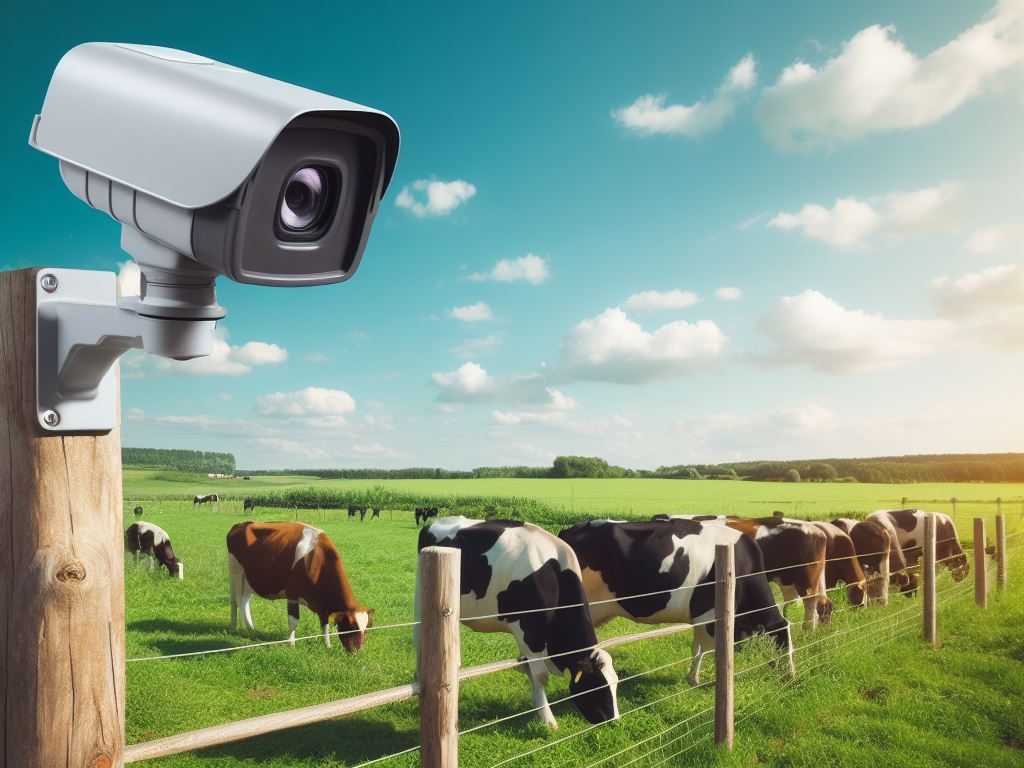
Selecting the Perfect Farm Surveillance Cameras: The security of your farm is paramount, and investing in the right surveillance cameras can make all the difference. So, how does one navigate through the myriad of options available in the market to find the perfect fit for their farm? First off, consider your specific needs. If your farm is expansive, a camera with a wide field of view would be ideal.
On the other hand, if you need to monitor specific areas such as barns or coops closely, a camera with high-resolution capabilities would be more suitable. Secondly, consider the durability of the camera. Farms are often subjected to harsh weather conditions, and as such, the chosen surveillance cameras should be robust and weather-resistant.
Lastly, ease of installation and integration with existing systems is crucial. A complex setup may not only be time-consuming but also leave room for errors. Integrated systems, on the other hand, allow for real-time monitoring and quick response to any incidents.
Choosing the right farm surveillance cameras may seem like a daunting task, but with these pointers, you’re well on your way to making an informed decision. After all, the safety and security of your farm are worth every penny spent.
Indoor vs Outdoor Cameras
When it comes to farm surveillance cameras, one may ponder over the choice between indoor and outdoor cameras. While indoor cameras are adept at monitoring the inside of your barns or sheds, they might not endure harsh weather conditions. On the flip side, outdoor cameras are designed to withstand extreme weather conditions and provide broader coverage, making them ideal for monitoring wide farm areas.
However, the choice between indoor and outdoor cameras ultimately hinges on your specific surveillance needs and priorities. So, the key to efficient farm surveillance is striking a balance between these two types of cameras.
Wired vs Wireless Cameras
When it comes to securing your agricultural property, farm surveillance cameras are a must. But the real question is, should you go wired or wireless? Wired cameras provide consistent, high-quality footage and are less susceptible to signal interference, making them a reliable choice. On the flip side, wireless cameras offer flexibility with easy installation and remote monitoring capabilities.
However, they can fall prey to signal disruptions. Your choice ultimately boils down to your farm’s specific needs. So, whether you’re a traditionalist favoring wired stability or a modern farmer seeking wireless convenience, there’s a surveillance solution out there for you.
Resolution and Night Vision
Farm surveillance cameras have revolutionized rural security, ensuring your livestock and property are protected around the clock. An essential aspect to consider is the resolution and night vision capabilities of these devices. High-resolution cameras offer crisp, clear images, making it easier to identify trespassers or potential threats.
Meanwhile, night vision functionality is critical as it enables uninterrupted surveillance, regardless of the time of day or light conditions. So, let’s shine a light on the dark corners of farm security with state-of-the-art farm surveillance cameras that offer both superb resolution and superior night vision.
Installation Tips & Tricks
Mastering the Art of Installing Farm Surveillance Cameras The installation of farm surveillance cameras isn’t a Herculean task, but it does require a strategic approach. These technological watchdogs play a vital role in deterring intruders, safeguarding valuable equipment, and even monitoring livestock. But, to maximize their potential, it’s essential to know some tips and tricks about their installation.
Firstly, the height and location of the cameras are crucial. Keep them at a place that covers a broad area, but also remains out of reach from potential vandals or curious animals. Next, ensure the cameras are weatherproof to withstand harsh farm conditions.
Lighting is another factor to consider. While many farm surveillance cameras come with night vision, installing them in well-lit areas can enhance the quality of recorded footage. Moreover, regularly check for obstructions like overgrown vegetation that can impede the camera’s view.
Consider the power source for your cameras. Wired cameras ensure continuous power supply, but the cables can be susceptible to damage. Wireless cameras, on the other hand, offer more flexibility in terms of placement but may require frequent battery changes.
Lastly, don’t overlook the importance of regular maintenance. Keep the cameras clean and free from dust, spider webs, or other debris that can affect their performance. Remember, the effectiveness of your farm surveillance cameras largely depends on their installation.
So, plan wisely and reap the benefits of a safe and secure farmstead.
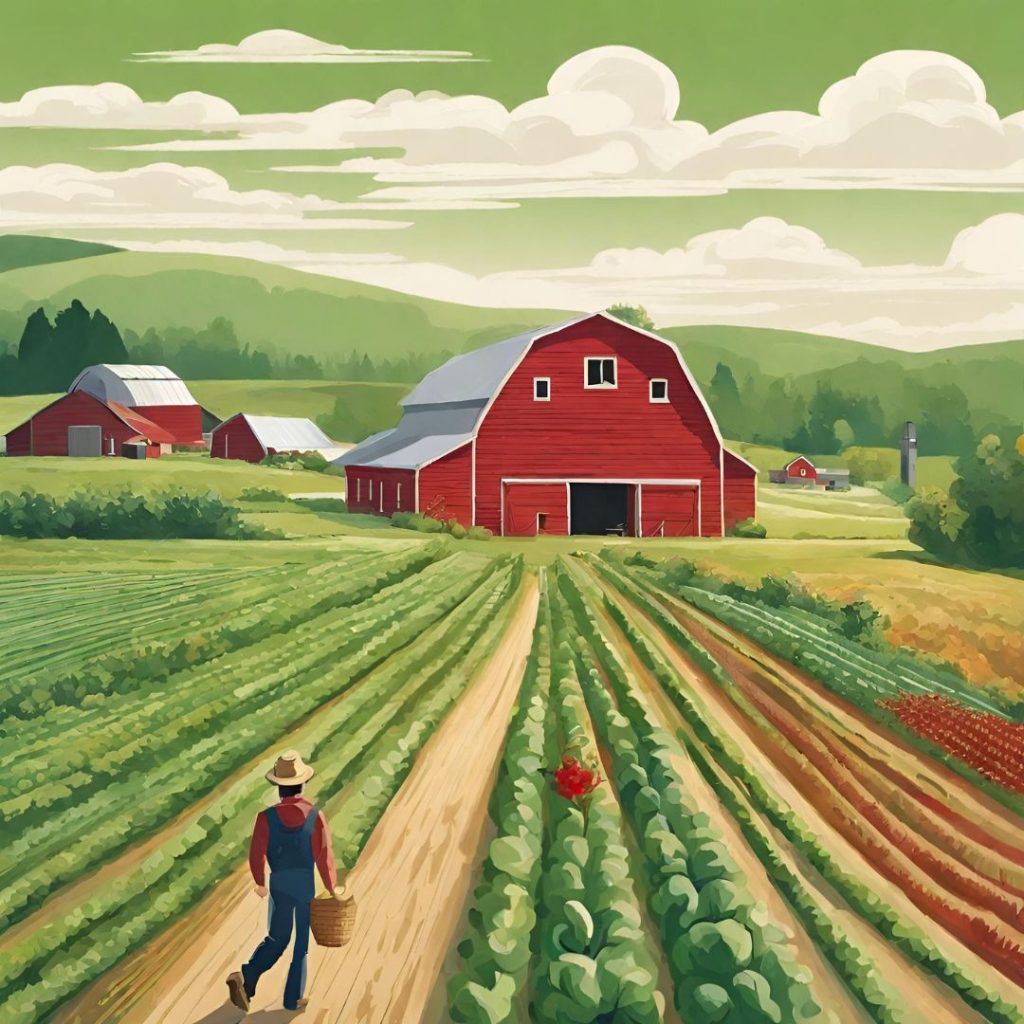
Ideal Camera Placement
In the quest for optimal farm security, the placement of your farm surveillance cameras is crucial. It’s not just about slapping cameras on barn doors and hoping for the best. The perfect camera positioning ensures that every corner of your farm is under vigilant surveillance, guaranteeing the safety of your livestock, crops, and equipment.
It’s a meticulous art, slightly akin to chess– every move must be calculated for maximum coverage. So, if you’ve ever found yourself wondering where to install these watchful eyes, this blog section is your ultimate guide – a masterclass in strategic camera deployment.
Maintaining Your Cameras
“Capturing every move on your farmstead is no small feat, and it’s the ‘behind-the-scenes’ heroes – your farm surveillance cameras – that make this possible. But these tireless sentinels need care too. Regular upkeep and maintenance of your cameras ensure that they function optimally, capturing crystal clear images and keeping your farm secure.
Whether it’s battling dust, braving the elements, or evading pesky critters, your cameras need to be in top form. So, don’t just install and forget. Make camera maintenance a part of your routine farm chores, because a well-maintained camera is the secret to a well-guarded fa
Review of Top Farm Surveillance Cameras
In the rapidly evolving world of agriculture, the safety and security of your farm cannot be overemphasized. Gone are the days when a simple lock and key were enough to keep your farm secure. With the rise in technology, farm surveillance cameras have become an integral part of farm security systems.
The ability to remotely monitor your farm, livestock, and agricultural equipment provides not just peace of mind, but also practical ways to enhance operational efficiency. In this review, we will delve into some of the top farm surveillance cameras on the market. Each model has been evaluated for its durability, image quality, ease of use, and, of course, cost-effectiveness.
From trail cameras that can capture wildlife incursions to high-definition cameras that can monitor your barns and fields in real-time, we have covered a wide spectrum of options. Remember, an investment in a good farm surveillance camera is an investment in the safety and productivity of your farm. So, buckle up and join us as we navigate through the world of farm surveillance cameras, helping you identify the perfect match for your unique farming needs.
Frequently Asked Question
What are the benefits of installing farm surveillance cameras?
Farm surveillance cameras provide numerous benefits, including protection against theft or vandalism, monitoring livestock or crops, and providing evidence for insurance claims. They can also help farmers monitor the daily operations and efficiency of their farms.
How do farm surveillance cameras work?
Farm surveillance cameras work by recording and transmitting footage in real time or for later review. They can be positioned strategically around the farm to monitor specific areas like barns, fields, or entrances. Some advanced models can also provide night vision, motion detection, or weatherproof features.
Are farm surveillance cameras difficult to install and maintain?
The complexity of installing and maintaining farm surveillance cameras can vary depending on the model and the size of your farm. Some cameras are simple to install and require minimal maintenance, while others may require professional installation and regular check-ups. Always refer to the manufacturer’s guidelines for specific instructions.
Is it expensive to set up a farm surveillance camera system?
The cost of a farm surveillance camera system can vary greatly depending on the size of the system, the number of cameras, the quality of the cameras, and any additional features. However, many farmers consider it a worthwhile investment for the increased security and efficiency it can bring to their operations.
Can farm surveillance cameras withstand outdoor conditions?
Yes, most farm surveillance cameras are designed to withstand outdoor conditions. They are typically weatherproof and can operate in a range of temperatures. However, it’s important to check the specifications of each model to ensure it fits your farm’s environment.
Can I monitor the footage from my farm surveillance cameras remotely?
Yes, many modern farm surveillance cameras offer the ability to remotely monitor the footage using a computer, smartphone, or tablet. This allows farmers to keep an eye on their property and livestock from anywhere, at any time.
Conclusion
Farm surveillance cameras are not just for the eyes in the skies, and they are indeed the unsung heroes in overalls. They serve as diligent scarecrows during the day and wise owls during the night. Armed with their ceaseless vigilance, they ensure that no intruder, be it human or animal, can sneak past undetected.
In the vast expanses of rural landscapes, these silent sentinels are the ever-watchful guardians, making farming not just about raising crops and livestock but also about raising security and peace of mind. So, remember, while farmers may sow the seeds, it’s the surveillance cameras that help reap the peace.
-

Unlocking the Potential of Biochar Integration Systems
In the emerging world of sustainable agriculture, innovations are continually transforming the way we approach farming and food production. One such game-changing innovation is the Biochar Integration System. This revolutionary system, rooted in ancient practices yet adapted for the modern world, offers a range of environmental and agricultural benefits, from improving soil fertility to sequestering carbon.
In this article, we’re going to delve deep into the world of Biochar Integration Systems, exploring their potential to revolutionize the agricultural landscape and contribute to global sustainability goals. Prepare to uncover the transformative power of this unassuming, carbon-rich material and its potential to reshape our future.
Table of Contents
Understanding Biochar
Unraveling the Intricacies of Biochar Integration Systems is a fascinating and innovative approach to sustainable agriculture, offering an intriguing blend of science and sustainability. At its core, biochar is a carbon-rich material produced from organic waste through a process called pyrolysis. This sophisticated process involves heating the organic waste in a low-oxygen environment, effectively preventing complete combustion and transforming the waste into a stable form of carbon, i.e., biochar. Incorporating biochar into agricultural systems can offer a plethora of benefits.
It enhances soil fertility, boosts crop productivity, and mitigates climate change by sequestering carbon. In essence, biochar integration systems transform waste into a valuable resource, thereby creating a sustainable loop of waste management and resource conservation. But the magic of biochar doesn’t end with soil enrichment.
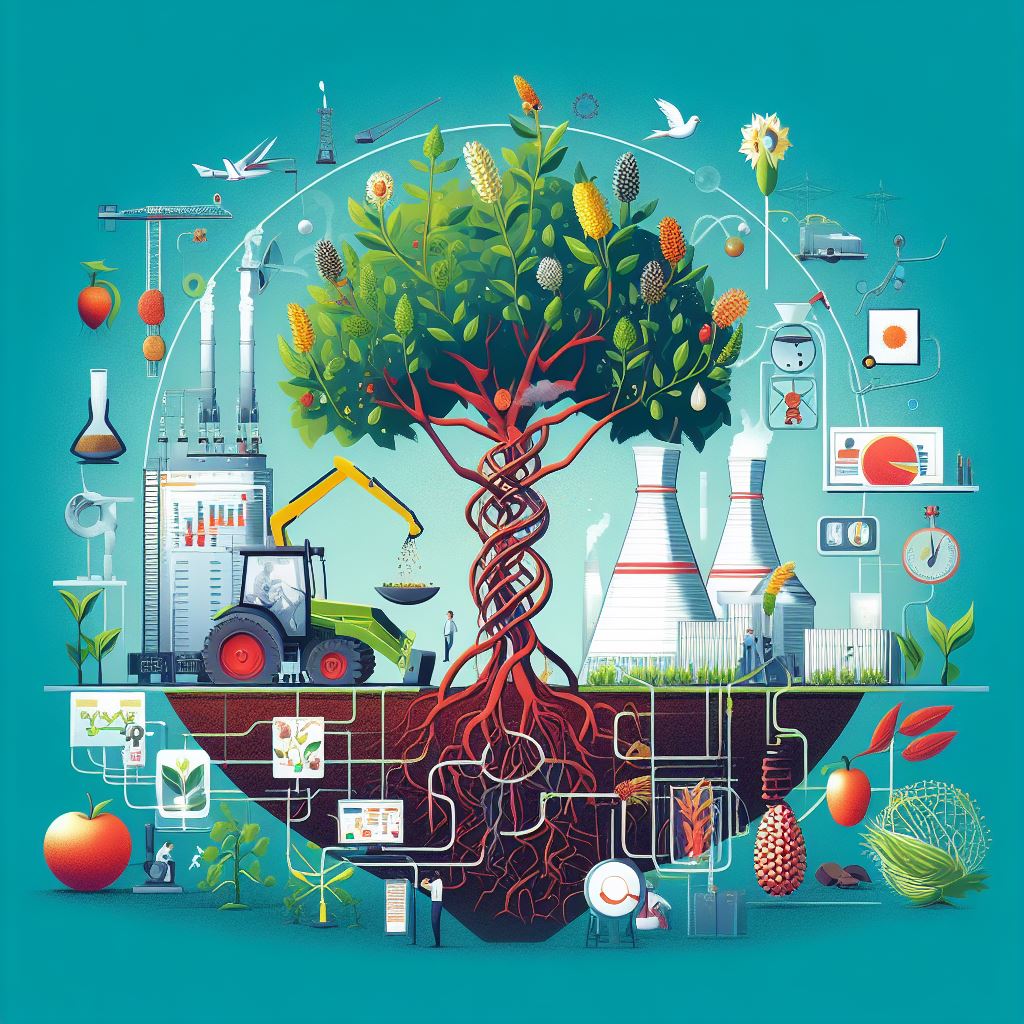
It also filters and retains nutrients in the soil, reducing the need for chemical fertilizers and promoting the growth of beneficial microorganisms. Furthermore, it can improve water retention in sandy soils and enhance the soil’s resilience to climate change-induced stress. While the science behind biochar integration systems may seem complex, the principle is quite simple.
It is a perfect illustration of how innovative solutions can transform waste into wealth, promoting sustainable and resilient agricultural practices. Understanding and embracing this ingenious approach is a pivotal step toward a more sustainable and resilient future.
Biochar: An Introduction
In the realm of sustainable agriculture, biochar integration systems have emerged as a game-changer. Biochar, a charcoal-like substance, is proving to be an eco-friendly solution for soil amendment and carbon sequestration. This product, derived from organic waste materials, is not only rich in carbon but also enhances soil fertility and stimulates plant growth.
Additionally, it serves as a long-term carbon sink, reducing greenhouse gas emissions. The incorporation of biochar into agricultural practices is a promising strategy, paving the way for a sustainable and productive future in farming. A witty yet clever solution to some pressing environmental concerns.
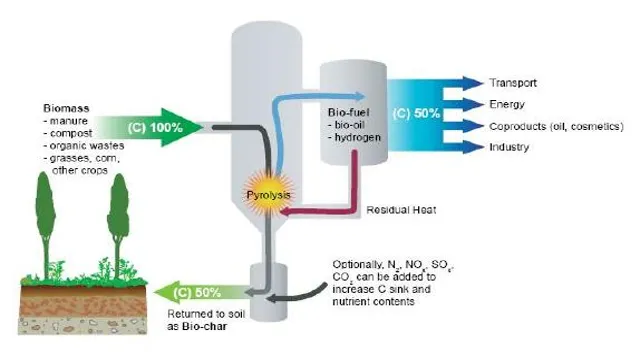
The Science Behind Biochar
Delving into the realm of sustainable agriculture, we unearth the pivotal role of biochar integration systems. This ingenious science hinges on the conversion of agricultural waste into a potent soil enhancer known as biochar. Intriguingly, this transformative process not only promotes plant growth but also stores carbon effectively, offering a promising solution to mitigate climate change.
Get ready for a captivating journey as we explore the scientific intricacies and remarkable benefits of biochar integration systems. This is a true testament to humanity’s ingenuity in harmonizing agricultural productivity and environmental conservation.
Biochar Integration System
Biochar Integration Systems: A Revolutionary Approach to Sustainable Agriculture In the world of modern, sustainable agriculture, Biochar Integration Systems have emerged as an innovative and eco-friendly solution. A biochar integration system is an agricultural practice that harnesses the power of biochar, a type of charcoal produced through the pyrolysis of biomass. These systems are designed to integrate biochar into various agricultural processes, creating a harmonious and sustainable cycle.
Biochar serves multiple functions in these systems. It not only improves soil fertility and crop yield but also aids in carbon sequestration, thus playing a crucial role in climate change mitigation. The beauty of biochar integration systems lies in their versatility.
They can be adapted to suit a variety of farming practices and environments, from large-scale commercial farms to small, subsistence-based operations. This adaptability, coupled with the numerous environmental benefits, makes biochar integration systems a promising tool in the quest for sustainable and resilient agricultural systems. However, the implementation of biochar integration systems is not without challenges.
It requires a proper understanding of biochar properties and their interaction with different soil types and crops. However, with ongoing research and technological advancements, these hurdles are being steadily overcome. In conclusion, biochar integration systems represent a revolutionary approach to sustainability in agriculture.
They offer a practical solution to some of the most pressing issues in agriculture, such as soil degradation and climate change. With further research and development, biochar integration systems have the potential to transform the future of farming, making it more sustainable, productive, and climate-friendly.
What is Biochar Integration?
Biochar integration systems are becoming increasingly popular as a sustainable solution for improving soil health and reducing carbon emissions. This ingenious approach involves the conversion of organic waste into biochar – a charcoal-like substance – which is then integrated into the soil. This process not only sequesters carbon, reducing greenhouse gas emissions but also enhances soil fertility and crop productivity.
If you’re picturing a win-win scenario for the environment and agriculture, you’re spot on! Biochar integration systems are indeed an eco-friendly innovation that marries science, sustainability, and soil health in a harmonious union.
Functions of Biochar Systems
Biochar integration systems serve as an innovative solution to modern agricultural challenges, performing a myriad of functions. These systems enhance soil fertility, reduce greenhouse gas emissions, and increase agricultural productivity. They do this by transforming organic waste into biochar, a type of charcoal that improves soil health.
This process not only aids in carbon sequestration but also contributes to waste management. Thus, biochar integration systems are a sustainable, effective, and clever answer to enhancing our agricultural practices while addressing environmental concerns. A witty solution indeed, turning waste into wealth while saving our planet!
Benefits of Biochar Systems
Biochar integration systems offer multiple benefits, transforming agricultural practices and environmental conservation simultaneously. This carbon-rich substance, derived from biomass, improves soil fertility and productivity, contributing to sustainable farming. Moreover, its ability to sequester carbon helps in mitigating climate change effects, while its water retention properties aid in drought resilience.
Notably, biochar systems can convert organic waste into a valuable resource, paving the way for a circular economy. Thus, integrating biochar systems can be a game-changer, promising a greener future with a healthier environment and enhanced agricultural yield.
Biochar System in Agriculture
The Evolution and Impact of Biochar Integration Systems in Modern Agriculture In the grand theater of modern agriculture, a new protagonist is emerging: biochar integration systems. This innovative approach to farming is not just a passing trend but a revolutionary method that holds the potential to transform the agricultural landscape drastically. Biochar, a charcoal-like substance produced from plant matter, is rapidly gaining attention in the agricultural sector.
Its integration into farming systems is seen as a promising solution to multiple agricultural challenges, from enhancing soil fertility to reducing greenhouse gas emissions. The magic of biochar lies in its unique properties. It is highly porous and has an exceptional ability to retain both water and nutrients, making it an excellent soil amendment.
When integrated into agricultural systems, biochar can improve the soil structure, boost crop productivity, and enhance the soil’s capacity to store carbon, thus mitigating climate change. Moreover, biochar integration systems offer a sustainable solution to waste management in agriculture. Instead of burning or discarding plant residues, which can contribute to environmental pollution, these materials can be converted into biochar and returned to the soil, creating a circular economy within the agricultural system.
However, it’s not all roses with biochar integration systems. Challenges, such as the high cost of biochar production and lack of knowledge on its long-term impacts, still need to be addressed. Nevertheless, the potential benefits of biochar for sustainable agriculture are too significant to ignore.
In conclusion, biochar integration systems represent an exciting frontier in agriculture. As research continues to unlock its potential, biochar may well prove to be the secret weapon for a more sustainable, productive, and resilient agricultural sector.
Role of Biochar in Soil Health
Biochar integration systems are instrumental in improving soil health. Biochar, a carbon-rich product derived from biomass, acts as a soil amendment, enhancing its fertility and productivity. It bolsters the soil’s ability to retain nutrients and water, reducing the need for chemical fertilizers.
Additionally, biochar aids in soil carbon sequestration, playing a vital role in mitigating climate change. In essence, the integration of biochar into our soils is a clever, sustainable solution that benefits not only our gardens and farms but also our planet.
Biochar and Crop Yield
In the pursuit of sustainable agriculture, biochar integration systems emerge as an ingenious solution. They present an intriguing paradox, as these systems are rooted in ancient practices yet are strikingly relevant in today’s green revolution. Biochar, a soil amendment produced from plant matter, is capturing the attention of agronomists and environmentalists alike for its promising impacts on crop yield.
This dark, nutrient-rich substance holds the potential to revolutionize farming practices and boost agricultural productivity while mitigating climate change. The integration of biochar into modern farming systems thus represents a fascinating convergence of tradition and innovation.
Environmental Impact of Biochar
The Environmental Implications of Biochar Integration Systems Biochar integration systems are making waves in the environmental field, presenting a potentially game-changing solution to some of our most pressing ecological issues. This system is based on biochar, a carbon-rich byproduct derived from the pyrolysis of organic materials. The use of biochar in agriculture can significantly reduce greenhouse gas emissions, improve soil health, and enhance crop productivity.
However, the environmental impact of biochar extends beyond the realm of agriculture. It can also play a crucial role in waste management, as it can transform organic waste into a valuable resource. Moreover, biochar has exceptional carbon sequestration capabilities, meaning it can effectively ‘lock away’ carbon for hundreds or even thousands of years, thus helping mitigate climate change.
Despite these benefits, it’s important to note that the successful implementation of biochar integration systems hinges on a number of factors. These include the feedstock used, the pyrolysis process, the application rate, and the specific environmental conditions of the area. As such, it’s essential to conduct comprehensive research and field trials to ensure that biochar use is both safe and beneficial for a given location.
Frequently Asked Questions
What are biochar integration systems?
Biochar integration systems refer to the process of incorporating biochar, a type of charcoal produced from plant matter, into various agricultural or environmental systems. This can enhance soil fertility, increase crop productivity, and help in carbon sequestration.
How does biochar integration work in agricultural systems?
Biochar integration in agricultural systems typically involves the addition of biochar into the soil. This not only improves the soil’s fertility and water retention properties but also reduces the emission of greenhouse gases. Biochar also provides a habitat for beneficial soil microorganisms, promoting healthier plant growth.
What are the benefits of using biochar integration systems?
Biochar integration systems offer numerous benefits, including enhancing soil fertility, increasing crop yield, reducing greenhouse gas emissions, and improving water quality. It also aids in waste management as biochar can be produced from a variety of organic wastes.
What are the potential drawbacks of biochar integration systems?
While biochar integration systems have many benefits, there are potential drawbacks. Biochar production requires energy and can contribute to air pollution if not properly managed. Also, the long-term effects of biochar application on soil health and biodiversity are not fully understood and require further research.
Is the use of biochar integration systems sustainable?
The use of biochar integration systems can be sustainable if managed properly. It can help sequester carbon, reducing greenhouse gas emissions. Additionally, biochar production can utilize waste materials, contributing to waste management solutions. However, the sustainability of these systems largely depends on the source of biomass and the production process.
Conclusion
The integration of biochar systems is not just a smart move; it’s a remarkably clever strategy for sustainable agriculture and environmental preservation. It’s like having a secret weapon hidden in plain sight, silently combating climate change by reducing greenhouse gas emissions and simultaneously enriching our soils. So, in essence, biochar is the James Bond of soil amendments – secret, efficient, and ingeniously beneficial to the world.
-

Mastering Animal Integration: Guide for Enthusiasts and Experts
If you’ve ever puzzled over how to integrate various species into a harmonious environment seamlessly, you’ve landed on the right page. Our comprehensive guide on animal integration is designed to answer every query and allay every concern. From the basics of understanding animal behavior to in-depth knowledge about compatibility, we’re here to help you create an Eden for your animals.
This guide is your one-stop resource, combining expert advice, research-backed data, and real-life success stories to provide an unparalleled insight into the world of animal integration. So, if you’re ready to embark on this journey, read on. We promise a wild ride!
Understanding Animal Integration
Understanding the Intricacies of Animal Integration The labyrinthine world of animal integration can be perplexing, akin to attempting to decipher an ancient, cryptic language. Yet, fear not, for this is where animal integration guides come into play, an invaluable tool that helps navigate the complexities of this diverse domain. Animal integration pertains to the harmonious incorporation of animals into diverse ecosystems, spanning from domestic settings to wildlife conservation efforts.
It involves the careful orchestration of various elements such as species compatibility, health considerations, environmental adaptations, and behavioral patterns. Animal integration guides offer comprehensive insights into these aspects, serving as a roadmap for successfully introducing animals into new environments. They provide a wellspring of information on crucial factors such as dietary requirements, habitat preferences, social structures, and potential threats.
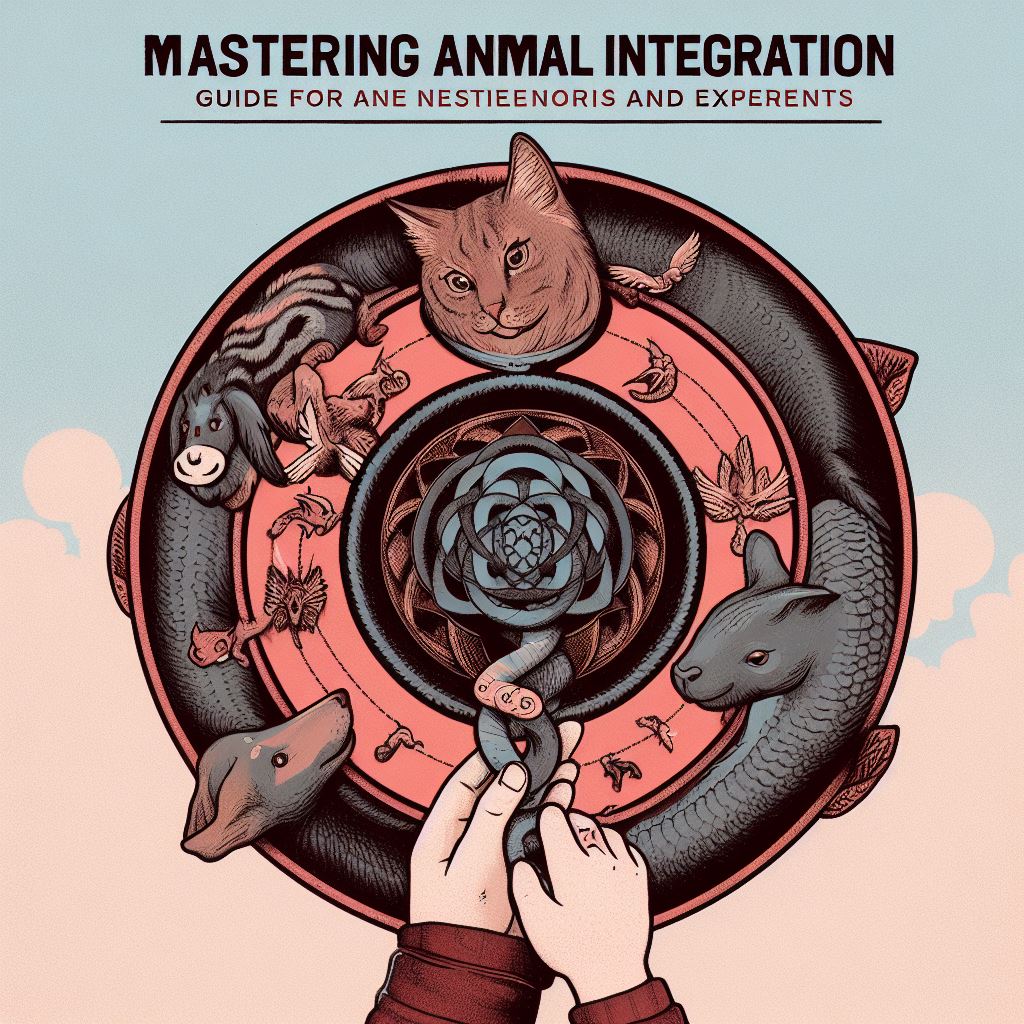
The role of these guides is not confined to mere information dispensation. They also help foster empathy and respect towards animals, promoting their ethical treatment and well-being. In essence, animal integration guides are not just manuals but catalysts for fostering harmonious coexistence between humans and animals.
In the grand tapestry of life, each animal thread has a unique role to play. So, if you find yourself standing at the crossroads of animal integration, let these guides be your compass, leading you toward informed and compassionate decisions.
Concept of Animal Integration
In the dynamic realm of biodiversity, the concept of animal integration plays a crucial role. It’s akin to the conductor of an orchestra, seamlessly orchestrating diverse species to create a harmonious ecosystem. Our animal integration guides provide a comprehensive understanding of this intricate process, explaining how different creatures coexist, interact, and contribute to the environment’s health.
Far from being a dry academic topic, animal integration is a lively, ever-evolving symphony that underpins all life on Earth. So, let’s dive in and explore this fascinating world of inter-species connections and collaborations.
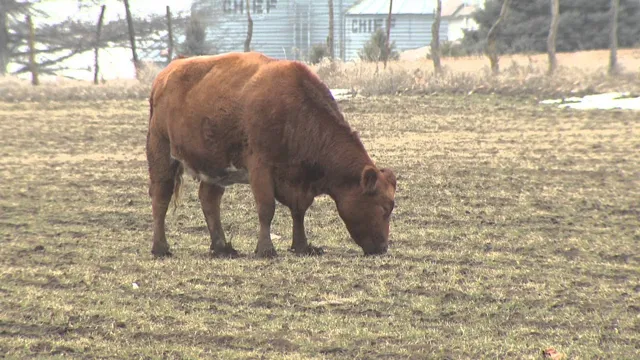
Importance of Animal Integration
Understanding and implementing animal integration in our daily lives is crucial. Animal integration guides serve as pivotal tools to navigate this complex process. They help us understand the intricate dynamics between humans and animals, fostering empathy and respect for all creatures.
Integrating animals into various spheres of human life not only enriches our personal experiences but also plays a significant role in conservation efforts. So, let’s delve deeper into the world of animal integration, unlocking the potential for harmony between species because coexistence is not just a concept; it’s a necessity.
Planning for Animal Integration
A Comprehensive Approach to Animal Integration: In the intricate tapestry of ecological sustainability, animal integration holds a significant thread. Beautifully weaving animals into the ecosystem can yield bountiful benefits, both for the environment and for the animals themselves. However, the process is easier said than done.
It calls for an extensive understanding of the ecosystem, animal behavior, and the potential impact of such integration. This is where our comprehensive animal integration guides come to the rescue. They serve as the ultimate roadmap, leading you through the meandering paths of successful animal integration.
These guides are designed to be user-friendly, ensuring you have all the information you need to make informed decisions. Whether you’re interested in integrating livestock into a farming system or introducing new species into a wildlife reserve, our guides cover an extensive range of scenarios. They provide detailed insights into the intricacies of animal behavior, their dietary requirements, habitat preferences, and their role in the ecosystem.
The guides also address potential challenges that might arise in the process of animal integration. They offer practical solutions and innovative strategies to overcome these hurdles, ensuring the seamless blending of animals into their new environments. As you venture into the world of animal integration, our guides will be your trusted companions, providing you with the knowledge and confidence to make the right choices.
They are more than just informational booklets; they are a testament to our commitment to promoting ecological balance and animal welfare. In essence, our animal integration guides are not merely about introducing animals into a new environment. They are about fostering harmonious relationships between animals and their ecosystems, promoting biodiversity, and ensuring the sustainability of our planet.
So, embark on this journey of animal integration with us, and let’s make a positive impact on the world together.
Choosing the Right Animals
Navigating the intricacies of animal integration can seem like a daunting task. Yet, with the right animal integration guides, you can make the process smooth and seamless. These guides help you select the right animals that align with your lifestyle, environment, and personal preferences.
Whether you’re a newbie farmer seeking to diversify your livestock or a pet enthusiast deciding on your next furry companion, the right guide can make all the difference. So, let’s embark on this exciting journey, exploring the fascinating world of animals, their behaviors, and the benefits they bring to our lives.
Preparing the Environment
In the realm of wildlife conservation, animal integration guides serve as a critical blueprint. These guides facilitate the harmonious co-existence of humans and wildlife, ensuring each species thrives in its natural habitat. But before we delve deeper into these guides, it’s crucial to set the stage- preparing the environment.
This step is a strategic dance between biology and ecology, nudging the environment to be an ideal host for various species. It’s a meticulous process, but with a dash of wit and a sprinkle of cleverness, it’s a fascinating journey we’re about to embark on. Let’s get started!
Determining Suitable Timeframes
In the fascinating realm of animal integration, timing plays a pivotal role. Our comprehensive guides provide a rich tapestry of knowledge to help you discern the ideal timeframe for introducing a new animal into your existing menagerie. With a dash of wit and a sprinkle of clever insights, we unravel the intricacies of animal behavior, socialization periods, and more.
The goal? To ease the transition and foster harmonious relationships amongst your beloved pets. Dive into the world of our animal integration guides, where science meets practicality, and every new addition feels like a seamless fit.
Implementing Animal Integration
Implementing Animal Integration: A Comprehensive Guide In the intricate tapestry of ecosystems, each organism has a significant role to play. Animal integration, an essential component in maintaining this balance, is a concept that deserves our keen attention. This blog post aims to serve as the ultimate guide to understanding and implementing animal integration in various ecosystems.
Animal integration refers to the strategic incorporation of different animal species into an ecosystem or a farming system. This practice promotes biodiversity, aids in pest management, and encourages the natural symbiotic relationships between different species. But these benefits aren’t just handed on a silver platter; they require careful planning, conscious effort, and a deep understanding of the animals involved.
Implementing animal integration involves meticulous research about the animals’ dietary preferences, natural habitats, and symbiotic relationships with other species. It’s not simply about throwing different animals together and hoping for the best. Instead, it’s about fostering an environment where each species can thrive and contribute positively to the ecosystem.
In addition to research, it’s also crucial to observe and monitor the animals’ behavior after their introduction to the ecosystem. This helps in identifying any potential issues early on and making necessary adjustments to ensure the continued success of the integration. In conclusion, implementing animal integration is a complex but worthwhile endeavor.
It’s a testament to how diversity and cooperation can lead to a healthier, more balanced ecosystem. With this guide, we hope to inspire more people to explore and appreciate the beauty of animal integration. As we continue to learn and adapt, we can look forward to a future where humans, animals, and the environment exist in perfect harmony.
Training and Conditioning Animals
In the fascinating world of animal training and conditioning, the significance of comprehensive animal integration guides cannot be overstated. These guides serve as invaluable resources, providing an array of techniques and strategies to facilitate the seamless integration of animals into new environments or social groups. They aim to ensure the well-being of both the animals and their handlers.
Adopting these guides can help transform an arduous task into a surprisingly delightful journey of mutual understanding and respect between humans and animals. So, let’s delve into the captivating realm of animal integration and make it an enriching experience for all involved.
Monitoring and Adjusting Strategies
In the dynamic realm of animal integration, it’s crucial to monitor and adjust strategies continuously. Our animal integration guides provide fresh insights and innovative techniques, ensuring a seamless blending of various species into new environments. This ensures a harmonious habitat, promoting biodiversity and ecological balance.
Any successful integration is a delicate dance of observation, adaptation, and timely action. So, whether you’re introducing a new animal species to a zoo or a farm, our guides can help navigate the complexity, making the process as smooth as an egret’s glide over a serene lake.
Case Studies of Animal Integration
Section Title: Intriguing Case Studies: A Closer Look at Animal Integration Guides Dive into the fascinating world of animal integration with our selected case studies. These accounts not only shed light on the complexity of animal integration but also serve as a testament to the transformative power of well-executed integration guides. From the seamless merging of endangered species into new habitats, the successful pairing of domestic pets into human households, to the harmonious coexistence of different animal species in the same environment, the stories are as diverse as they are enlightening.
These case studies offer an in-depth look at the application of animal integration guides, providing valuable insights into their effectiveness, challenges, and the innovative solutions derived to enhance the process. Each case study is a narrative of resilience and adaptability, underscoring the pivotal role played by animal integration guides in facilitating these successful transitions. They highlight the importance of comprehensive planning, patience, and continuous monitoring in ensuring the well-being and survival of animals in new environments.
These real-life examples serve as a compass for those embarking on their animal integration ventures. Whether you’re an animal conservationist, a pet owner, or simply an animal enthusiast, these case studies are sure to provide a wealth of knowledge and inspiration. Join us as we unravel these captivating tales of triumph, adaptation, and survival.
These compelling narratives are a testament to the intricate dance of animal integration, orchestrated by the invaluable guides who make it all possible.
Frequently Asked Questions
What are animal integration guides?
Animal integration guides are resources that provide information on how to successfully introduce a new animal into a pre-existing group of animals. They can be specific to a certain species or provide general advice applicable to various types of animals.
Why are animal integration guides important?
Animal integration guides are important because they help pet owners or animal caretakers avoid conflicts and stress when introducing a new animal. These guides help to ensure a smooth transition and promote harmony within the group.
Where can I find reliable animal integration guides?
Reliable animal integration guides can be found from various sources such as animal welfare organizations, veterinary clinics, pet stores, and reputable online pet forums. It’s always good to consult with a vet or animal behaviorist for advice tailored to your specific situation.
What kind of information do animal integration guides usually provide?
Animal integration guides typically provide information on the steps to take before, during, and after introducing a new animal. This might include advice on choosing the right animal, preparing the environment, monitoring interactions, and managing potential conflicts.
Can animal integration guides help with integrating different species?
Yes, animal integration guides can help with integrating different species. They usually provide species-specific advice, such as how to introduce a dog to a cat or a bird to a rabbit, taking into account their unique behaviors and needs.
Conclusion
Integrating animals into your life is not just about creating a comfortable environment for them but also understanding their unique behaviors, needs, and communication styles. Think of it as learning a new language, where the words are replaced with barks, meows, chirps, and even silent cues. Such a journey is sure to add a new, enriching dimension to your life, and let’s remember – when it comes to animals, even the wildest beast can be tamed with love and understanding. So, unleash your inner Dr. Dolittle and embark on this exciting adventure of animal integration. Remember, in the grand circus of life, it’s all about learning to juggle our differences with finesse.
-
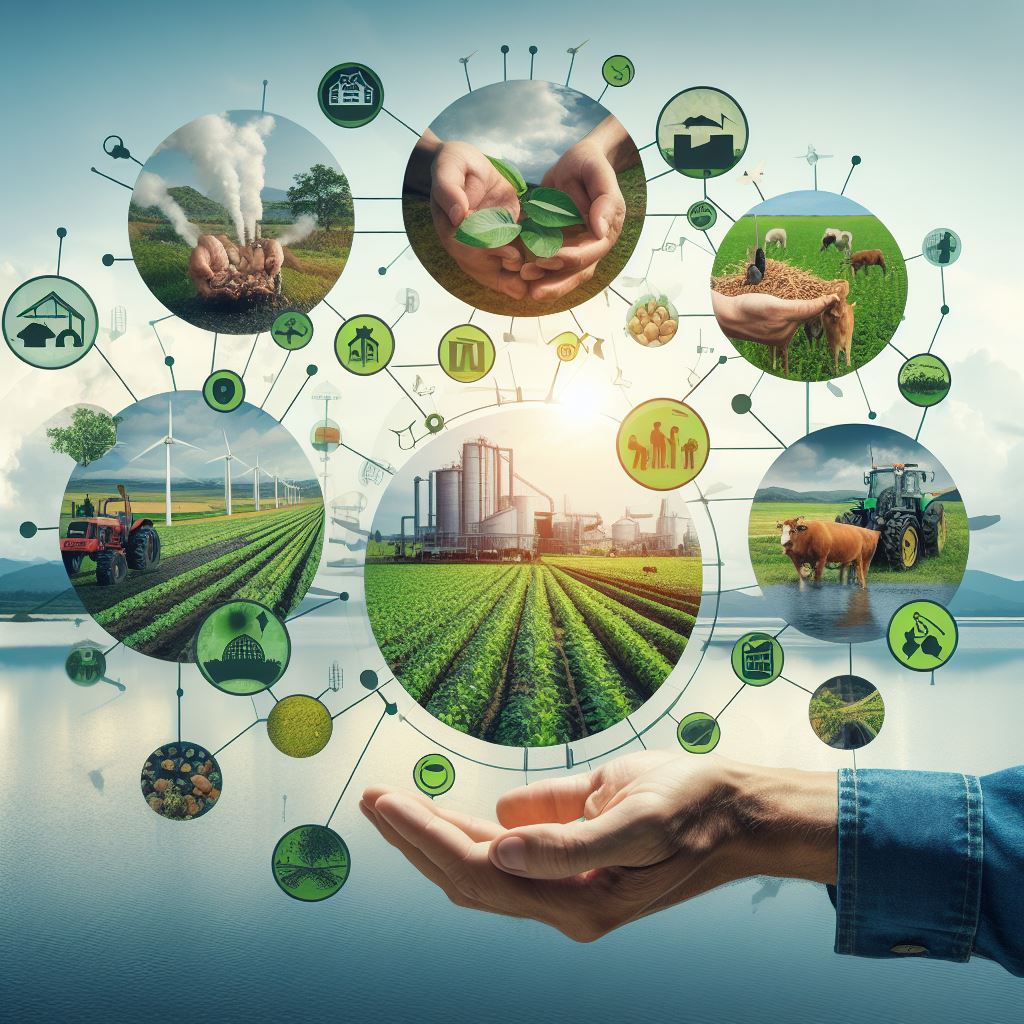
Essential Add-ons for Conservation Farming
As we navigate into the future, the importance of conservation farming is becoming increasingly undeniable. However, exploring the different add-ons that enhance its efficacy might seem like an overwhelming task. This is why we have taken it upon ourselves to delve into this intricate world, dissecting it piece by piece to bring you a comprehensive understanding of the most effective tools in conservation farming.
In this blog post, we will spotlight the various conservation farming addons that are not just efficient and cost-effective but also environmentally friendly. Whether you’re a seasoned farmer looking to embrace more sustainable practices or a beginner seeking knowledge in this field, this guide will serve as an invaluable resource. So, let’s embark on this journey towards a more sustainable future in farming, one addon at a time.
Understanding Conservation Farming
Delving Into the Intricacies of Conservation Farming Addons As the global community becomes increasingly cognizant of the environmental predicament, there has been a surge in interest towards more sustainable farming practices. One such approach that continues to gain traction is conservation farming. But what exactly does this entail, and what are the conservation farming add-ons that complement this practice? Conservation farming is an eco-friendly agricultural method that prioritizes the preservation of the environment while enhancing crop yield.
It champions practices like minimum soil disturbance, permanent soil cover, and crop rotations, all aimed at preserving the soil structure and enhancing its fertility. So, what’s the fuss about conservation farming addons? These refer to additional tools, techniques, or practices that further enhance the sustainability and productivity of conservation farming. They might include technologies like precision farming tools, organic pest control methods, or the use of cover crops to improve soil health.
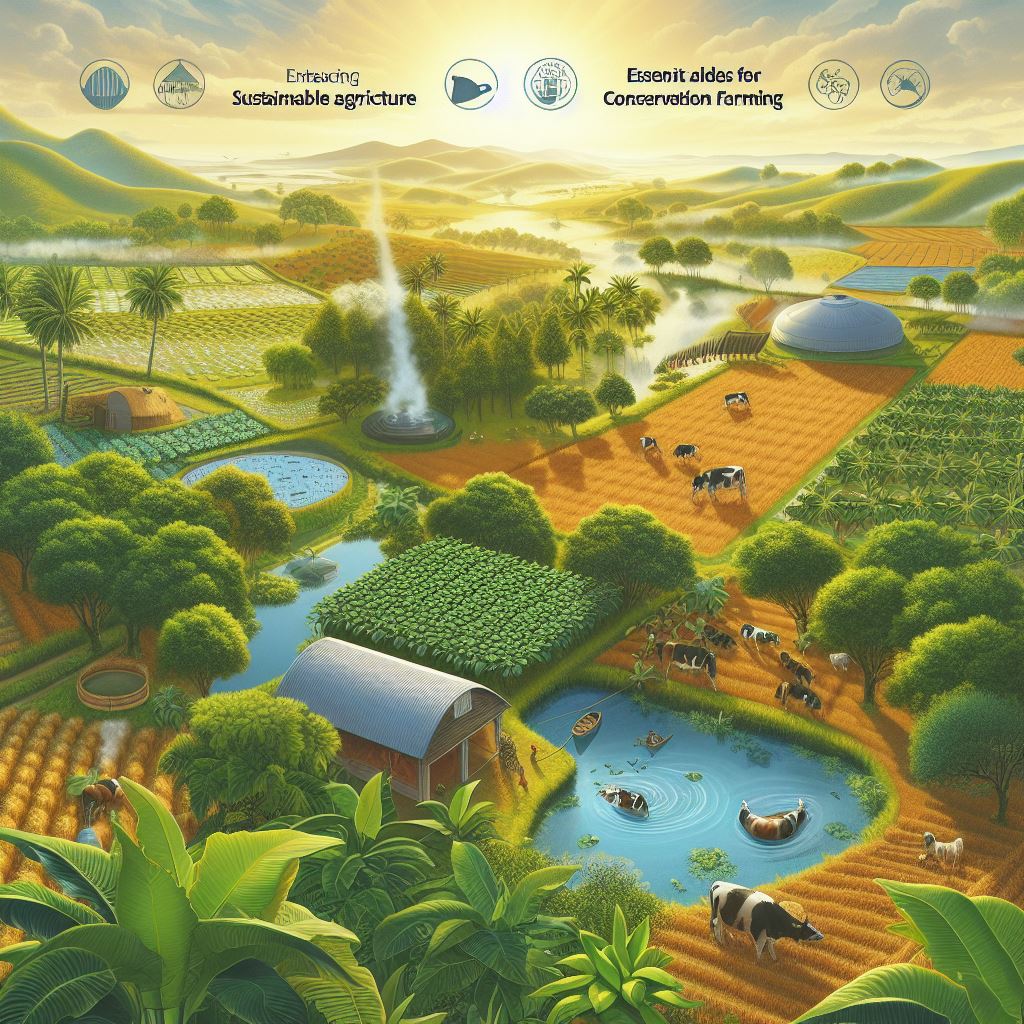
These add-ons, in essence, are like the cherry on top of a well-baked cake. They augment the efficiency of conservation farming, thereby amplifying its benefits for both the farmer and the environment. With the right add-ons, farmers can optimize their use of resources, reduce their carbon footprint, and boost their yield, all while safeguarding our precious planet.
Key Principles of Conservation Farming
In this section, we delve into the key principles of conservation farming, focusing on the crucial add-ons that augment its effectiveness. Conservation farming, an innovative agricultural practice, prioritizes ecological harmony and long-term sustainability. It’s no ordinary ‘grow and harvest’ technique; it demands a holistic approach, integrating essential add-ons such as crop rotation, minimum tillage, and permanent soil cover.
These add-ons not only enhance soil health but also promote biodiversity, contributing to a resilient, productive farming ecosystem. Stay tuned as we unravel the complexities of these principles, offering an insightful journey into the world of conservation farming.

Benefits of Conservation Farming
Conservation farming addons are not just an agricultural trend but a necessity for sustainable agriculture. These add-ons enhance soil health, increase crop yields, and promote biodiversity. They also play a significant role in mitigating climate change through carbon sequestration.
Their ability to reduce water usage and chemical inputs, minimize soil erosion, and decrease fuel and labor costs further make them a cost-effective choice for farmers. Embracing conservation farming addons can, therefore, lead to a win-win situation – for both farmers and the environment. So, let’s delve into the advantages of these eco-friendly farming practices.
Introduction to Farming Addons
Farming is a practice as old as civilization itself, constantly evolving with technological advancements. The latest development in this age-old sector is the introduction of conservation farming add-ons. These digital tools, designed to integrate with existing farming operations seamlessly, are revolutionizing agricultural practices, making them more efficient, sustainable, and environmentally friendly.
Conservation farming addons are innovative software tools designed to scale up sustainable farming practices. They leverage data, analytics, and automation to foster conservation farming, a method that focuses on preserving the environment while improving farm productivity. From precision agriculture to resource management, these add-ons help farmers make data-driven decisions, reduce waste, and minimize their environmental footprint.

While traditional farming methods often involve tactics that can be detrimental to the land and ecosystem, conservation farming addons provide farmers with the knowledge and tools to adopt more sustainable practices. By offering real-time insights into soil health, water usage, crop rotations, and more, these add-ons help farmers manage their resources more effectively, leading to improved yields, lower costs, and a healthier environment. In a world where technology and farming increasingly intersect, conservation farming addons are not just a fancy addition to the agricultural toolkit.
They are a necessity for any forward-thinking farmer looking to stay competitive in a rapidly changing industry while contributing to a sustainable future. They represent a fusion of tradition and innovation, providing a smart solution to the age-old challenge of balancing productivity with sustainability. So, whether you’re a seasoned agriculturalist or a greenhorn in the field, conservation farming addons are worth exploring.
After all, farming is not just about reaping what you sow; it’s about ensuring that future generations can do the same.
Role of Addons in Modern Agriculture
Addons play a crucial role in enhancing modern agriculture by facilitating conservation farming practices. These tools often serve as a conduit between innovative technology and traditional farming methods, integrating seamlessly to optimize productivity, promote environmental sustainability and conserve resources. Whether it’s an addon that enhances precision farming or one that promotes soil health, these tools are the unsung heroes of modern agriculture.
They’re transforming the landscape, literally and figuratively, redefining conservation farming and carving a path for a more sustainable agricultural future. So, let’s tip our hats to these indispensable tools, the add-ons, the silent revolutionaries of modern agriculture.
Different Types of Farming Addons
Diving into the agricultural landscape, one cannot ignore the innovative strides made with farming add-ons. These tools, especially conservation farming addons, have reinvented the plow, promising sustainable yields and a healthier planet. From GPS-guided tractors to automated irrigation systems, precision farming addons are the new sheriffs in town, enforcing optimized use of resources.
Next, we have hydroponic and aeroponic add-ons, the space-age solutions for soil-less farming. Not forgetting the organic farming add-ons, the champions of natural balance and biodiversity. Each type of these farming addons caters to a unique aspect of farming, heralding a new era of smart, sustainable agriculture.
Choosing the Right Addons for Your Farm
In the realm of conservation farming, addons are not just accessories but essential tools that can significantly enhance the efficiency and sustainability of your agricultural practices. Choosing the right add-ons for your farm is a meticulous process that requires a deep understanding of your farm’s specific needs, the environmental impact, and the potential increase in yield. Whether it’s precision farming equipment for accurate seed planting, soil moisture sensors for optimal irrigation, or composting systems for organic waste management, the right add-ons can revolutionize your conservation farming efforts, making it a more fruitful and environmentally friendly endeavor.
Linking Addons to Conservation Farming
Integrating Add-ons with Conservation Farming: A Sustainable Approach In an era where sustainable farming practices are gaining momentum, conservation farming has emerged as a key player. Conservation farming methods aim to manage agricultural resources sustainably while also enhancing biodiversity and ecosystem services. However, to fully harness the potential of these methods, a little extra push is required.
This is where conservation farming addons come into play. These add-ons are innovative solutions designed to complement and enhance traditional conservation farming practices. They range from cutting-edge technology like precision farming tools and drones to organic solutions such as cover crops and biochar.
These add-ons not only boost the efficiency of conservation farming but also play a significant role in mitigating the impacts of climate change. For instance, precision farming addons can help farmers monitor and manage their crops more effectively, reducing waste and improving yields. Similarly, the use of cover crops can enhance soil health, promote biodiversity, and aid in pest management.
In essence, conservation farming addons are not just mere tools or techniques. They are an integral part of a larger, more holistic approach to sustainable agriculture. By integrating these add-ons into our farming practices, we can make strides toward a more sustainable, resilient, and productive agricultural sector.
So, conservation farming addons are not just an option but a necessity in the current agricultural scenario.
Addons That Support Conservation Principles
In an era where sustainable farming is rapidly gaining traction, conservation farming addons are proving to be game-changers. These ingenious tools are designed to enhance the productivity of agricultural practices while adhering to conservation principles. From smart irrigation systems to soil enrichment modules, these add-ons are breathing new life into conventional farming methods.
They aid in preserving biodiversity, reducing soil erosion, and promoting efficient water use, thereby ensuring our farming practices are in harmony with Mother Nature. So, if you’re an advocate of sustainable agriculture, it’s time to embrace these conservation farming addons and revolutionize the way we farm.
Examples of Conservation-Enhancing Addons
In the realm of sustainable agriculture, conservation-enhancing addons are emerging as a game changer. These powerful tools, designed to promote conservation farming, are transforming traditional farming practices, enabling farmers to reduce environmental impact while boosting productivity. From precision farming equipment that minimizes waste to innovative irrigation systems that conserve water, these add-ons are revolutionizing the agricultural sector.
Smart soil sensors, advanced crop monitoring technology, and eco-friendly pest management solutions are just a few examples that demonstrate the intersection of technology and sustainability in modern farming. These add-ons are not merely optional extras but vital tools in building a sustainable future.
Practical Tips for Using Addons
Section Title: Harnessing the Power of Conservation Farming Addons: A Practical Guide In the world of sustainable agriculture, conservation farming addons have revolutionized the way we approach farming. They are not just tools but a boon to our agricultural practices, enhancing productivity while preserving our precious resources. The beauty of these add-ons lies in their versatility, catering to different aspects of farming such as soil conservation, crop rotation, and water management.
But how can we tap into their full potential effectively? Firstly, it’s crucial to understand the functionality of each addon. For instance, soil testing kits provide insights into soil health, thus enabling better decision-making for fertilizer application. Rainwater harvesting add-ons, on the other hand, offer a sustainable solution for irrigation.
Secondly, the implementation of these add-ons should be strategic. One doesn’t need every addon in the market. The selection should be based on the specific needs of your farm.
For instance, if your farm is in a region with heavy rainfall, a water conservation addon may not be as necessary. Lastly, regular maintenance and updates are key to ensuring optimal performance. This means checking for software updates, cleaning up hardware components, and troubleshooting any issues promptly.
Just like any other technology, conservation farming addons are only as good as how we use them. By following these practical tips, we can harness their power effectively, leading us one step closer to more sustainable and efficient farming practices.
Frequently Asked Questions
What are some popular conservation farming addons used today?
Some popular conservation farming add-ons include precision agriculture tools like GPS, yield mapping systems, and variable rate technology. Other add-ons include cover crops, crop rotation, and nutrient management systems that help in maintaining soil health and biodiversity.
How can conservation farming add-ons benefit my agricultural practices?
Conservation farming add-ons can help to improve soil health, increase crop yield, and reduce erosion. They can also lower your dependency on chemical fertilizers and pesticides, thus saving costs and reducing environmental impact.
Are there any challenges associated with implementing conservation farming add-ons?
Yes, there can be challenges. For instance, there may be a learning curve to understand and effectively use technology-based addons. Also, the initial cost of some add-ons may be high. However, the long-term benefits often outweigh these challenges.
Can conservation farming add-ons help in climate change mitigation?
Absolutely, conservation farming add-ons like cover cropping and precision farming can help in reducing greenhouse gas emissions. They enhance soil carbon sequestration, reduce chemical usage, and optimize resource use, thus contributing to climate change mitigation.
What is the role of government and NGOs in promoting conservation farming addons?
Governments and NGOs play a crucial role in promoting conservation farming add-ons. They provide subsidies, training, and technical support to farmers. They also research to develop more effective and affordable add-ons.
Conclusion
Conservation farming addons are not just smart tools; they are the sassy sidekicks of modern farmers. Acting as the Robin to their Batman, they aid in the preservation of the environment while optimizing farming procedures. They are the Jeeves to our Wooster, simplifying complexities and making sustainable farming a breeze. In the epic narrative of agriculture, they are the plot twist that saves the day, ensuring a sustainable and productive future for farming. So, in the realm of agriculture, conservation farming addons are not just an option; they are the witty, clever heroes we need.
-
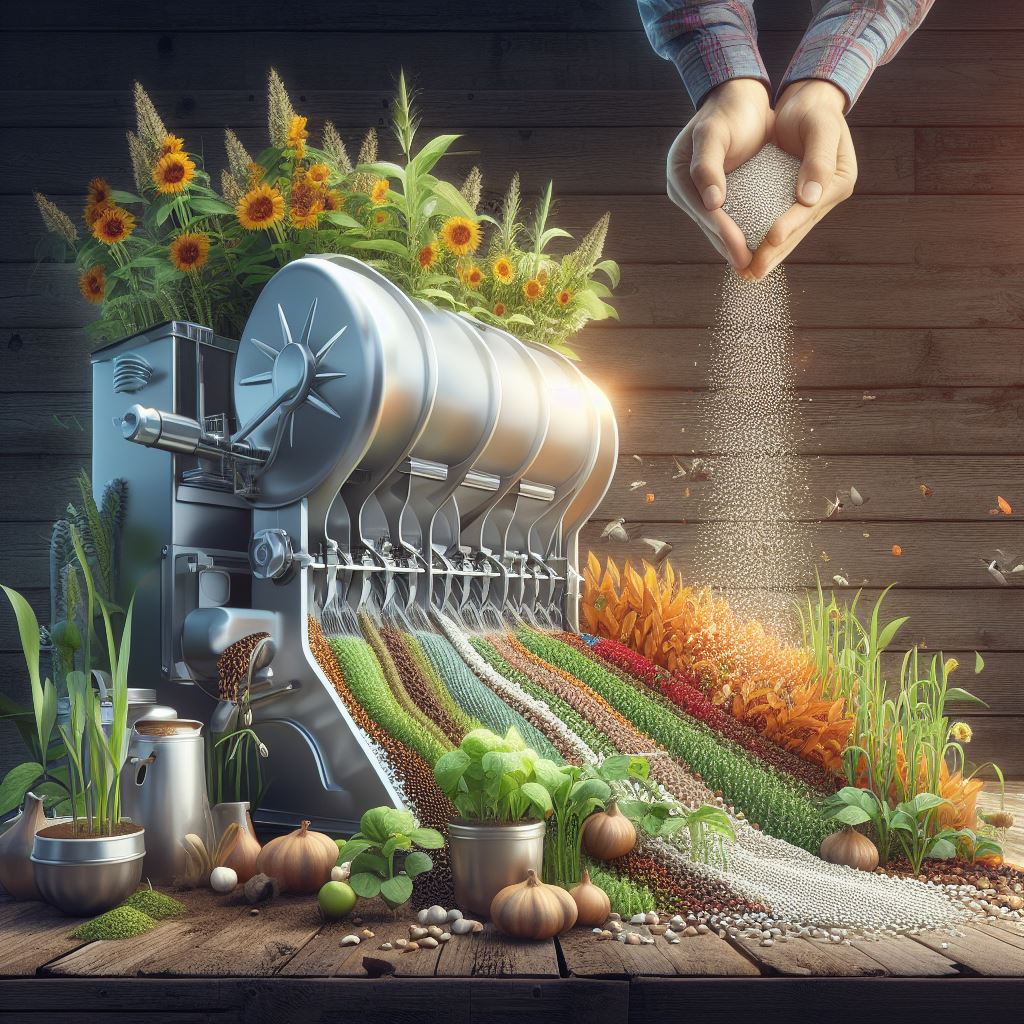
Exploring the Efficiency of Cover Crop Seed Dispensers
Cover Crop Seed, an integral part of sustainable agriculture, has numerous benefits, from soil enrichment to pest management. However, the process of sowing them can sometimes pose a challenge. Enter the world of cover crop seed dispensers – a game changer in the realm of agricultural innovation.
These versatile tools are designed to efficiently distribute seeds across the land, allowing farmers to reap the benefits of cover crops without the backbreaking labor. Whether you’re an experienced farmer seeking to streamline your sowing process or a novice gardener intrigued by the idea of sustainable agriculture, this exploration into the world of cover crop seed dispensers will shed light on the endless possibilities they offer. So, let’s delve deep into the heart of agricultural innovation and unearth the potential of these remarkable tools.
Understanding Cover Crops
Decoding the Intricacies of Cover Crop Seed Dispensers Agriculture, like any other industry, continues to evolve with the integration of new technological developments and innovative practices. One such innovation that has gained traction in recent years is the use of cover crops. Cover crop planting is a time-honored practice with a modern twist and an essential tool in the sustainable agriculture arsenal.
But how are these seeds efficiently and effectively sown? Enter the realm of cover crop seed dispensers. Cover crop seed dispensers are the unsung heroes of the agricultural world, playing a pivotal role in the successful establishment of cover crops. They ensure the seeds are evenly distributed, optimally placed, and adequately covered, all of which are critical factors that influence the growth and development of the crop.
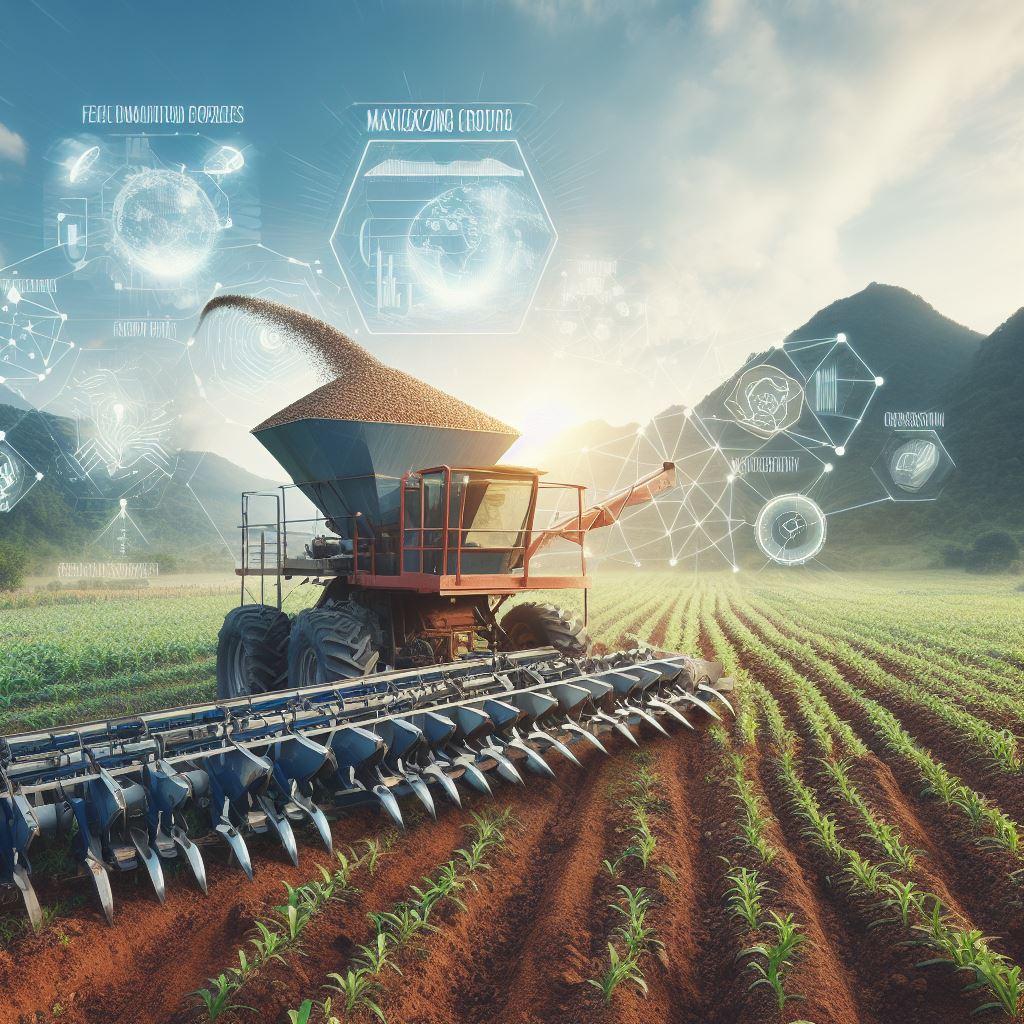
These dispensers, in their various forms and adaptations, offer an efficient way to introduce these beneficial plants into your crop rotation. They are designed to work in harmony with the natural rhythm of the ecosystem, enabling the farmer to cultivate a healthier and more productive soil environment. With cover crop seed dispensers, the process of sowing seeds is no longer a labor-intensive and time-consuming task.
Instead, it becomes a more streamlined and precise operation, contributing to higher yields and more sustainable farming practices. When used correctly, cover crop seed dispensers can be the catalyst for a thriving agricultural ecosystem, proving that even in farming, it’s often the smallest details that make the biggest difference. So, let’s tip our hats to these humble devices that play a pivotal role in nourishing our soils, our crops, and, ultimately, our planet.
Benefits of Cover Crops
Cover crop seed dispensers, the unsung heroes of modern agriculture, are instrumental in enhancing soil health, biodiversity, and sustainability. These ingenious devices enable the strategic sowing of cover crops, which serve multiple beneficial purposes. Cover crops not only protect the soil from erosion and nutrient depletion but also improve its fertility and structure while suppressing harmful pests and diseases.
They play a crucial role in promoting biodiversity by providing habitat for beneficial insects and wildlife. Moreover, they contribute to sustainable farming practices by recycling nutrients reducing the need for chemical fertilizers and pesticides. Truly, cover crop seed dispensers are the torchbearers of a greener, healthier, and more sustainable future for agriculture.

Different Types of Cover Crops
Cover crop seed dispensers play an instrumental role in sowing various types of cover crops. From legumes like clover and vetch that enrich the soil with nitrogen to grasses like rye and oats that prevent soil erosion, cover crops are the unsung heroes of sustainable agriculture. But, how do these seeds find their way into the soil? Enter the cover crop seed dispenser – a farmer’s secret weapon.
This device, as the name suggests, dispenses seeds uniformly across the field, ensuring optimal growth and soil health. It’s a clever, effective tool that’s making waves in modern farming.
The Need for Seed Dispensers
The Importance of Utilizing Cover Crop Seed Dispensers The agricultural landscape is ever-evolving, and as we plough through the 21st century, the need for sustainable and efficient farming methods has never been more critical. This is where cover crop seed dispensers come into play, a tool that might seem unassuming but packs a mighty punch in the realm of modern agriculture. For the uninitiated, cover crop seed dispensers are devices used to distribute seeds across fields evenly.
They are designed to promote efficient planting, ensuring that no seed goes to waste. This is particularly crucial for cover crops, plants that are not grown for harvest but rather to enrich the soil, prevent erosion and manage pests and diseases. The beauty of these devices lies in their simplicity.
They are easy to use and can significantly reduce the time spent on sowing seeds manually. More so, they can improve the consistency of seed distribution, leading to better crop growth and, eventually, a more bountiful yield. However, the function of cover crop seed dispensers transcends the mere distribution of seeds.
They represent an investment in the future of farming, a commitment to sustainable practices that prioritize soil health and fertility. By using these tools, farmers are not just planting seeds; they are sowing the foundation for a more sustainable and resilient agricultural industry. In conclusion, the need for cover crop seed dispensers is not just a necessity but an obligation.
They are not just tools; they are guardians of the soil, nurturers of the seed, and champions of sustainable farming. So, let’s raise a toast to cover crop seed dispensers, the unsung heroes of modern agriculture.
Efficiency of Seed Dispensers
Efficiency is the name of the game when it comes to cover crop seed dispensers. These agricultural marvels are revolutionizing the farming industry, delivering precision and productivity in one fell swoop. Not only do they meticulously distribute seeds across vast terrains, but they also reduce labor and time costs, making them an invaluable tool in any farmer’s arsenal.
Their efficiency is not limited to cost-effectiveness but extends to enhancing crop yield and soil health. So, here’s to the unsung heroes of the agricultural world – the cover crop seed dispensers, where ingenuity meets practicality.
Choosing the Right Seed Dispenser
Choosing the correct cover crop seed dispenser is an integral part of successful farming. This device ensures accurate seed distribution, optimizing growth potential and reducing wastage. But how do you pick the right one? Consider factors such as the type of crop, the terrain of your farm, and the size of the area to cover.
Remember, a well-chosen seed dispenser not only facilitates seamless planting but also contributes to a bountiful harvest. So, with a dash of patience and a pinch of research, you can master the art of choosing the perfect cover crop seed dispenser.
Top Seed Dispensers for Cover Crops
“Mastering the Art of Seeding: Top Seed Dispensers for Cover Crops” In the realm of sustainable gardening and farming, cover crops stand as unsung heroes. These green warriors are adept at improving soil health, curbing erosion, and thwarting pesky weeds. However, for these benefits to materialize, the seeds of these crops need to be distributed evenly and efficiently across your garden or field.
This is where the magic of cover crop seed dispensers comes into play. These handy tools are a testament to the harmonious marriage of technology and nature. They ensure that your cover crop seeds are dispersed evenly, promoting optimal growth and health for your garden or farm.
In the market, you’ll find a plethora of options ranging from hand-held spreaders for small gardens to tow-behind models for larger farms. Among the top contenders are the Earthway Hand Crank Garden Seeder and the Agri-Fab Tow Behind Broadcast Spreader. The Earthway Seeder offers adjustable control, catering to different seed sizes and types, while the Agri-Fab Spreader boasts a large capacity, perfect for sprawling agricultural fields.
Whether your green thumb is just budding or has fully bloomed, there is a cover crop seed dispenser that can elevate your gardening or farming game. So, embrace these tools and let them assist you in sowing the seeds of a lush, healthy, and sustainable future.
Manual Seed Dispensers
Manual seed dispensers have revolutionized the way we plant cover crops, offering a perfect blend of convenience and control. These ingenious devices precisely distribute seeds, ensuring a uniform spread that promotes optimal growth. With a manual cover crop seed dispenser, you can bid goodbye to the messy, haphazard scattering of seeds.
They are designed to save time, reduce waste, and improve the overall efficiency of your planting process. So, whether you’re a gardening enthusiast or a professional farmer, these handy tools are a game-changer, taking the guesswork out of seeding and adding a touch of finesse to the entire process.
Mechanical Seed Dispensers
“Mechanical Seed Dispensers: A Game-Changer in Cover Crop Cultivation” As a farmer, achieving efficient and precise seeding is like hitting a bullseye in darts – immensely satisfying. This is where the brilliance of mechanical cover crop seed dispensers comes into play. These technological marvels have revolutionized the farming industry, optimizing the process of sowing cover crops.
With their ability to distribute seeds uniformly across the field, these dispensers are indeed the unsung heroes of agricultural productivity. So, let’s dive into the world of mechanical seed dispensers and explore how they are changing the game in cover crop cultivation.
Maintaining Your Seed Dispenser
Section Title: The Art of Maintaining Your Cover Crop Seed Dispensers In the vast universe of agriculture, cover crop seed dispensers are the unsung heroes. These handy devices are responsible for sowing the seeds of your future crops, playing an instrumental role in your farming success. However, it’s important to remember that, like all heroes, your cover crop seed dispensers also need some tender loving care to continue operating at their best.
Firstly, regular cleaning is vital. Dust, dirt, and residual seeds can clog the dispenser, impeding its functionality over time. It’s not just about keeping the exterior shiny; the interior mechanisms need attention too.
It’s like maintaining a high-performance sports car; you wouldn’t let gunk build up in the engine, would you? Additionally, check and replace worn-out parts promptly. Delayed action can lead to bigger problems down the line; imagine trying to sow seeds with a broken dispenser in the middle of planting season. Regular inspections will prevent such catastrophes, keeping your dispenser in top shape.
Lastly, storing your cover crop seed dispensers properly can’t be stressed enough. Keep them in a dry, cool place away from direct sunlight to prevent damage from moisture and heat. It’s like providing a comfortable home for your hardworking devices.
In a nutshell, maintaining your cover crop seed dispensers is essential for ensuring a smooth, productive farming season. Give them the care they deserve, and they will repay you with years of loyal service. After all, in the world of farming, a well-maintained seed dispenser is worth its weight in gold.
Cleaning and Storing Your Dispenser
Maintaining the longevity and efficiency of your cover crop seed dispensers begins with a thorough cleaning and storing routine. Seed dispensers, like any other farm equipment, require regular maintenance to ensure they perform at their optimum. A clean dispenser minimizes the risk of seed contamination and blockages, ensuring an even and accurate seed distribution.
Proper storage, on the other hand, protects your dispenser from damaging weather conditions and prolongs its lifespan. So, don’t underestimate the power of a good cleanup and secure storage space – your dispenser (and your crops) will thank you!
Regular Maintenance Tips
Keeping your cover crop seed dispensers in optimal working condition is essential for efficient farming. Regular maintenance can enhance the lifespan and functionality of these indispensable machines. This includes routine cleaning to avoid clog-ups, timely replacement of worn-out parts, and periodic calibration to ensure accurate seed distribution.
Additionally, proper storage when not in use can prevent potential damage. Remember, a well-maintained cover crop seed dispenser not only saves you time and money but also contributes to a more productive and sustainable farming operation. After all, in farming, it’s the little things that make a big difference!
Frequently Asked Questions
What are cover crop seed dispensers?
Cover crop seed dispensers are specialized equipment used in agriculture to disperse seeds for cover crops. These machines distribute the seeds evenly across the field to ensure optimal growth and soil coverage.
How do cover crop seed dispensers work?
Cover crop seed dispensers function by storing seeds in a hopper, which is then dispersed evenly across the soil through a mechanical system. The dispenser can be manually operated or attached to a tractor for larger fields.
Why are cover crop seed dispensers important in farming?
Cover crop seed dispensers are essential in farming because they ensure an even and efficient distribution of seeds. This helps in maximizing the benefits of cover crops, such as soil improvement, erosion control, and weed suppression.
Can I use a cover crop seed dispenser for different types of seeds?
Yes, most cover crop seed dispensers are versatile and can be used for a variety of seed types. However, it’s always important to check the manufacturer’s instructions to ensure the dispenser is suitable for your specific seeds.
Where can I purchase a cover crop seed dispenser?
Cover crop seed dispensers can be purchased from agricultural supply stores, online marketplaces like Amazon or directly from manufacturers. Prices vary depending on the size and functionality of the dispenser.
Conclusion
Cover crop seed dispensers are the unsung heroes of the agricultural world. They may not have the flashiness of a high-tech tractor or the romantic allure of a rustic scarecrow, but they are the silent maestros, orchestrating the birth of vast fields of crops. These clever devices sow the seeds of future harvests in a way that is as efficient as it is unassuming. They transform the hard labor of planting into an almost effortless task, proving that sometimes, the best supporting actor is the one backstage, quietly ensuring the show goes on. So, here’s to the cover crop seed dispensers – the backstage ninjas of the farming world, turning the soil into a green symphony, one seed at a time.
-
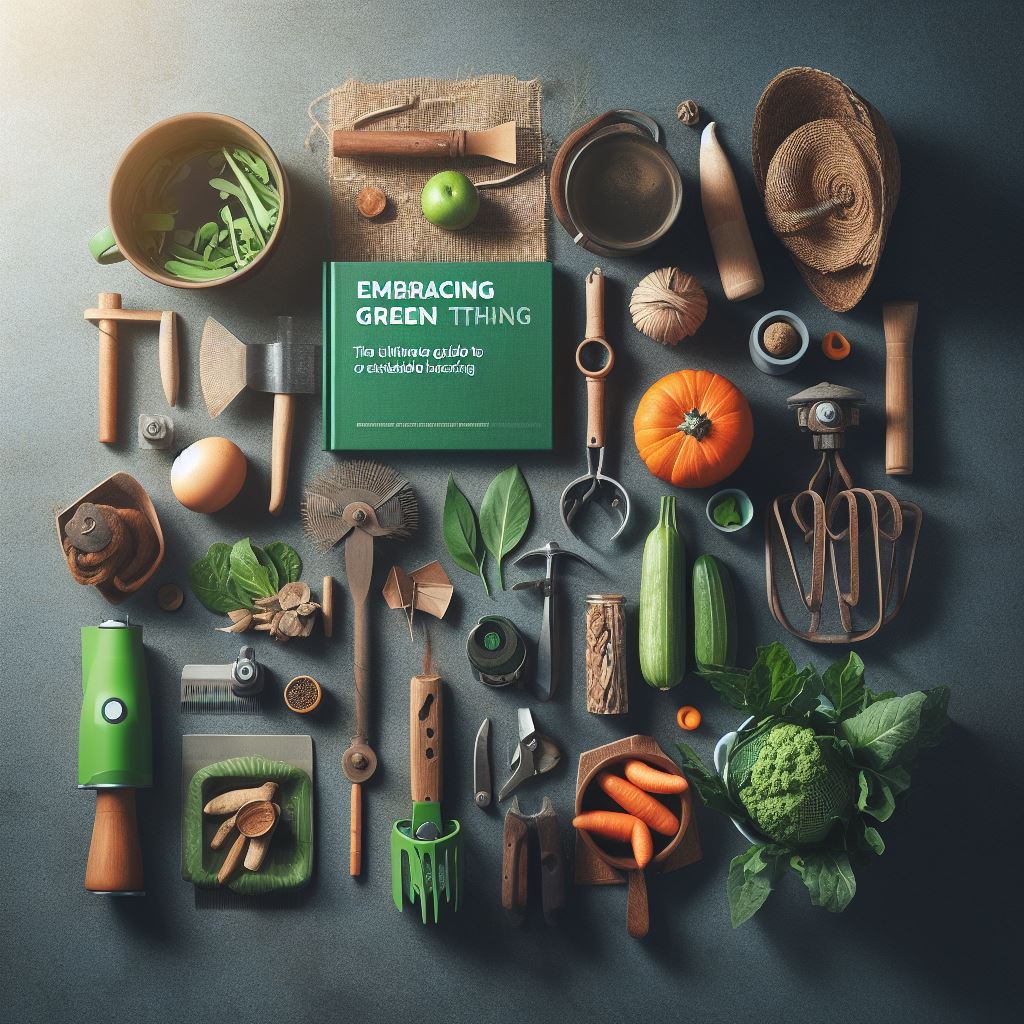
Embracing Green Practices: The Ultimate Guide to Sustainable Harvesting Tools
As we step further into the era of environmental consciousness, the tools we use for Sustainable Harvesting are no longer just about efficiency but also sustainability. Our planet’s health has become a focal point, requiring us to adapt our practices to preserve its resources for future generations. This comprehensive guide on sustainable harvesting tools is designed to help you navigate this transformation while ensuring productivity.
We will delve into the diverse range of eco-friendly tools available, their benefits, and how they contribute to a sustainable harvesting process. Becoming more environmentally responsible doesn’t mean compromising on effectiveness; instead, it’s about choosing the right tools that harmonize productivity with sustainability. So, whether you’re a seasoned harvester or a green enthusiast, this guide is sure to equip you with the knowledge you need to make informed choices.
Understanding Sustainability
Sustainability: A Closer Look at Sustainable Harvesting Tools Sustainability, an increasingly popular buzzword in today’s society, is all about making choices that protect the environment and ensure a better future for the next generations. It is a concept that transcends all sectors, and one area where it plays a significant role is agriculture, particularly in harvesting. Enter sustainable harvesting tools, the unsung heroes of the sustainability movement in farming.
These tools are engineered to minimize waste and reduce damage to the environment while ensuring efficiency and productivity. They make it possible for farmers to gather crops in a way that respects the earth and its resources. For instance, some tools are designed to harvest only ripe produce, leaving the unripe ones to mature.

Others are built to minimize soil disruption, thereby preventing erosion and preserving the soil’s health. There are even tools that operate using renewable energy sources such as solar or wind power, further reducing their carbon footprint. In essence, sustainable harvesting tools are a testament to human ingenuity and our capacity to innovate for the good of our planet.
They represent our commitment to balancing economic progress with environmental responsibility. And as we continue to grapple with the challenges of climate change, these tools will undoubtedly play a crucial role in shaping a more sustainable future. So, the next time you enjoy a fresh, crisp apple or a juicy, ripe tomato, take a moment to appreciate the sustainable harvesting tools that made it possible.
These tools, although often overlooked, are the driving force behind our ability to enjoy nature’s bounty without compromising the health of our planet.
Definition of Sustainable Harvesting
“Sustainable Harvesting: Tools for A Greener Future” explores the concept of sustainable harvesting, a practice that ensures resource longevity by balancing the extraction of natural resources with their regeneration rate. This ecological approach demands innovative tools to optimize the harvesting process without endangering our planet’s future health. From low-impact logging equipment to smart fishing nets, these sustainable harvesting tools are revolutionizing industries.
They blend traditional wisdom with modern technology, promoting efficiency and reducing environmental impact. This blog section delves into these ingenious tools, showcasing how they are paving the path toward a more sustainable future.
Importance of Sustainable Practices
In the quest for environmental preservation, sustainable harvesting tools have emerged as a significant game changer. These tools not only ensure efficient utilization of resources but also significantly reduce the strain on our planet. They epitomize the perfect blend of innovative technology and responsible environmental ethics.
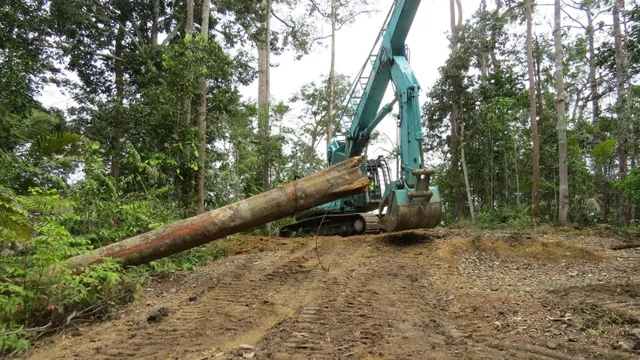
Their importance cannot be overstated – they are the unsung heroes in our fight against reckless consumption and environmental degradation. So, let’s tip our hats to these champions of sustainability and continue our march towards a greener, more sustainable future.
Types of Sustainable Tools
Type Description Functionality and Benefits Materials Used Hand Pruners Designed to reduce damage to plants during pruning. Reduces plant damage, encourages healthy growth, and precise trimming. Recycled steel, sustainably sourced wood Broadforks Promotes soil health by not overturning the soil layers. Environmentally friendly, reduces reliance on non-renewable energy sources, and conserves water. Recycled steel, sustainably sourced wood Solar-Powered Irrigation Systems Utilizes solar energy to power irrigation systems, reducing water usage. Sustainable material, the fast growth rate of bamboo, reduces reliance on traditional wood sources. Solar panels, eco-friendly materials Bamboo Gardening Tools Crafted from bamboo, a renewable and fast-growing plant. Sustainable material, the fast growth rate of bamboo reduces reliance on traditional wood sources. Bamboo Recycled Plastic Tools Made from recycled plastic, reducing plastic waste and promoting sustainability. Recycles plastic waste, prevents new plastic production, and supports circular economy. Recycled plastic With these tools in hand, we can cultivate our gardens and the planet simultaneously. Hand Tools for Sustainable Harvesting
In the realm of sustainable harvesting, the appropriate selection of tools is a fundamental aspect that should not be overlooked. Hand tools for sustainable harvesting are designed to minimize disturbance to the environment while maximizing efficiency and productivity. These tools, which range from pruning shears to hand saws, are not just mere instruments; they are the silent allies of the conscious gardener, promoting sustainability and respect for our natural resources.
Their cleverly engineered designs ensure that the harvesting process is completed with ease, all while preserving the integrity of the plants and the surrounding ecosystem.
Mechanized Sustainable Tools
In the arena of agriculture and forestry, the advent of mechanized sustainable harvesting tools is a game-changer. These avant-garde tools not only streamline the harvesting process but also prioritize the health of our environment. These sustainable tools, designed ingeniously, marry efficiency with eco-consciousness, ensuring a lower carbon footprint without compromising on productivity.
From solar-powered harvesters to precision sprayers, they serve as a testament to human ingenuity. Mechanized sustainable harvesting tools are, without a doubt, the unsung heroes of modern agriculture, striking a balance between the demands of the present and the needs of the future.
Innovative Tools in the Market
In the rapidly evolving world of agriculture, a new breed of sustainable harvesting tools is revolutionizing the industry. These innovative tools, designed with both the farmer and the environment in mind, offer a smart and efficient approach to crop production. From solar-powered machinery to precision agriculture devices, these tools are not only reducing the environmental impact of farming practices but also increasing yield and productivity.
Cutting-edge technology is paving the way for a more sustainable future in agriculture, providing solutions that are beneficial for both our planet and our pocketbooks. So, let’s delve into the world of sustainable harvesting tools and explore these fascinating innovations.
Benefits of Sustainable Tools
Sustainable harvesting tools are more than just a trend; they are a necessity in our contemporary world, which is grappling with the adverse effects of climate change and environmental degradation. Harnessing the power of sustainable harvesting tools offers a plethora of benefits that extend beyond the realm of environmental conservation. Firstly, these tools are designed to last, saving you money in the long run.
They are typically made from durable, high-quality materials that can withstand the test of time. This longevity translates to less frequent replacements, thus reducing waste and contributing to a more circular economy. Secondly, sustainable harvesting tools are often designed with efficiency in mind.
They are engineered to perform tasks with minimal energy input, thus conserving resources. This efficiency also translates to increased productivity, as less time and effort are required to perform tasks. Thirdly, sustainable harvesting tools are a testament to responsible sourcing and production.
They are typically made from materials that are either recycled or sourced in an environmentally-friendly manner. This emphasis on sustainability extends to the manufacturing process, which is often designed to minimize energy use and waste production. Lastly, using sustainable harvesting tools can contribute to a healthier environment.
By reducing waste and conserving resources, these tools help to lessen our impact on the environment. This can help to preserve biodiversity, protect ecosystems, and combat climate change. In essence, sustainable harvesting tools are not just a tool; they are a lifestyle choice.
They represent a commitment to preserving our planet for future generations while optimizing efficiency and productivity in the present. They are a testament to the power of innovation and sustainability and a beacon of hope for a greener future.
Environmental Advantages
“Unearth the Green Power: Environmental Advantages of Sustainable Harvesting Tools” In the quest for eco-friendly practices, sustainable harvesting tools emerge as unsung heroes. Deploying these tools doesn’t just symbolize a nod to Mother Nature but also offers tangible environmental advantages. Sustainable harvesting tools reduce damage to surrounding vegetation, protect the soil from erosion, and promote the growth of diverse species.
Not just that, they also significantly lower energy consumption and greenhouse gas emissions. A clever combination of traditional wisdom and innovative technology, these tools are genuinely a green thumbs-up to our planet’s health. So, let’s delve deeper into the environmental advantages of these green warriors!
Economic Benefits
“Sustainable Harvesting Tools: A Catalyst for Economic Prosperity” Delving into the world of sustainable harvesting tools presents an intriguing panorama of economic benefits. These innovative tools, designed to promote environmental conservation, also serve as a catalyst for economic prosperity. By increasing efficiency and minimizing waste, they play a pivotal role in reducing production costs.
Not to mention, the use of sustainable harvesting tools fosters a circular economy, creating new markets and job opportunities. So, it’s not just about going green; it’s about growing green too – a witty yet clever portrayal of sustainability meeting profitability.
How to Choose Sustainable Tools
Choosing sustainable harvesting tools is not just about embracing the green movement; it’s about making a conscious choice for the health of our planet. It requires careful consideration and an understanding of what makes a tool sustainable. But worry not, this task is not as daunting as it may sound.
When selecting sustainable harvesting tools, consider the material from which they’re made. Ensure the materials are either recycled or sourced responsibly. For instance, tools made of FSC-certified wood or recycled metal are excellent choices.
The manufacturing process also matters. Look for companies that use energy-efficient methods and have a low carbon footprint. Also, durability is key.
A tool that breaks down frequently is not sustainable, no matter how green its production process might be. Good quality, durable tools might cost more upfront, but they will save money and resources in the long run as they won’t need to be replaced as often. Moreover, consider the functionality of the tool.
Multi-purpose tools are more sustainable as they reduce the need for multiple single-purpose tools, subsequently reducing resource use and waste. Lastly, think about the end of the tool’s life. Tools that can be easily recycled or composted are more sustainable than those destined for the landfill.
Choosing sustainable harvesting tools is an easy way to make your gardening or farming practices more environmentally friendly. It’s a small step, but when many people take this step, it can have a significant impact on our planet’s health. After all, every sustainable choice counts.
Frequently Asked Questions
What are sustainable harvesting tools?
Sustainable harvesting tools are implements used to collect or gather resources in a manner that is environmentally friendly and does not deplete the source. These tools can range from traditional hand tools to modern machines that have been modified or designed to limit their impact on the environment.
Why are sustainable harvesting tools important?
Sustainable harvesting tools are critical for the preservation of our natural resources. They ensure that the harvesting processes do not cause unnecessary harm to the environment and allow for the resource to regenerate, promoting long-term sustainability.
What industries commonly use sustainable harvesting tools?
Sustainable harvesting tools are commonly used in various sectors such as agriculture, forestry, fishing, and even in some mineral extraction industries. These industries rely heavily on natural resources, and using sustainable tools helps to maintain a balance between resource utilization and conservation.
How do sustainable harvesting tools contribute to the economy?
Sustainable harvesting tools contribute to the economy by promoting the prolonged use of natural resources. By ensuring that resources are not depleted, industries can continue to produce goods and services over a longer period. This not only generates revenue but also supports job creation and stability.
How can one transition from traditional harvesting tools to sustainable ones?
Transitioning to sustainable harvesting tools may involve investing in new equipment, training, and potentially changing harvesting methods. It may also involve adopting new technologies and practices that reduce environmental impact. It’s also important to raise awareness and educate workers about the benefits of sustainable harvesting
Conclusion
Sustainable harvesting tools are the superheroes of environmental preservation, using their powers not to combat villains but to tackle waste, inefficiency, and harm to our planet. They are the embodiment of the adage, “work smarter, not harder,” proving that innovation and conservation are not mutually exclusive. Like a well-written punchline, the brilliance of these tools lies in their simplicity and effectiveness – they are designed to get the job done while minimizing the impact on our environment. So, the next time you reach for a harvesting tool, remember – choose the one that not only reaps the best results but also sows the seeds for a sustainable future.
-
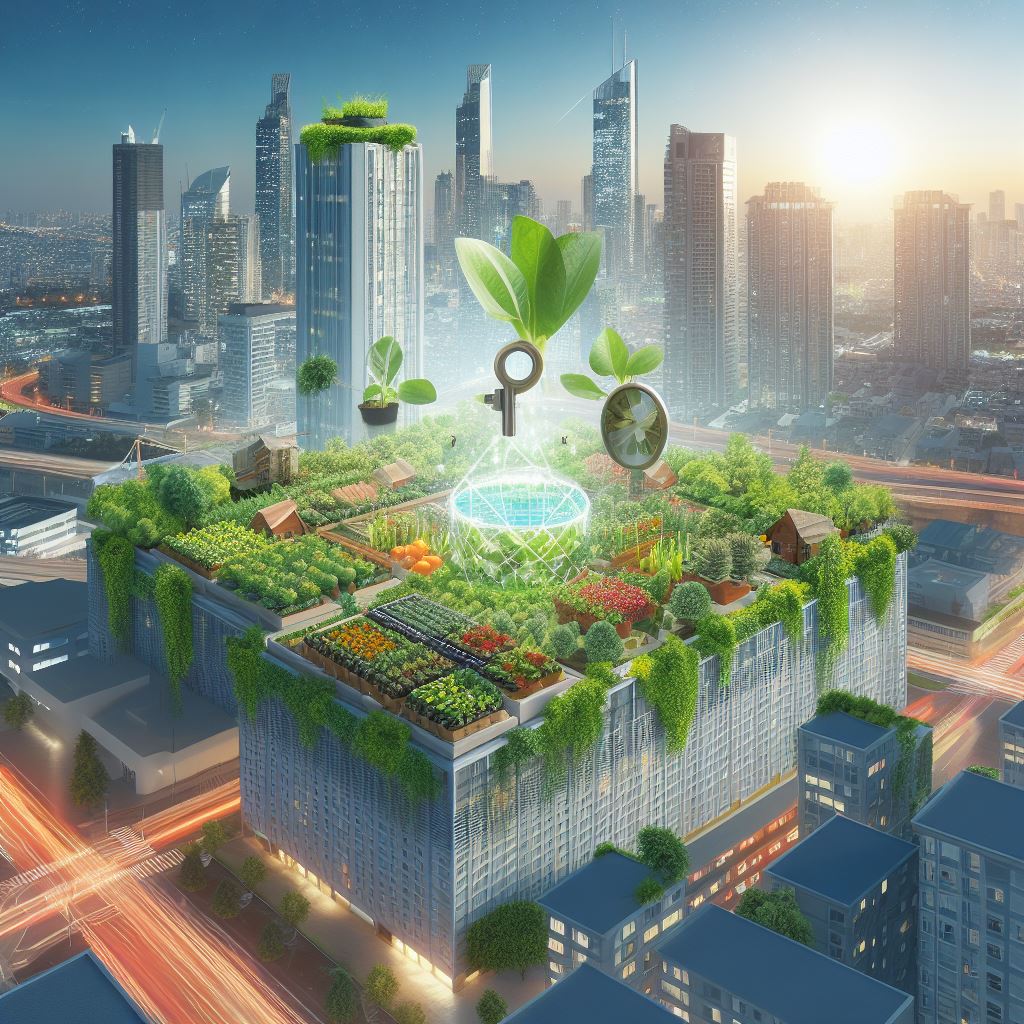
Unlocking Urban Sustainability: Innovative Rooftop Farming Solutions for the Modern City
As our urban landscapes continue to expand, innovative and sustainable Rooftop Farming Solutions methods are not just desirable—they’re essential. At the intersection of urbanization and agriculture, a green revolution takes shape: rooftop farming. This transformative concept offers a myriad of benefits, including food security, energy efficiency, and environmental conservation, promising a healthier, greener future for our cities.
In this blog post, we delve into the world of rooftop farming, exploring its potential, challenges, and how it’s reshaping urban living. Join us as we ascend to these verdant oases in the sky and discover how rooftop farming is not just growing crops but hope for a more sustainable tomorrow.
Understanding Rooftop Farming
Rooftop farming is not just the latest trend in urban agriculture; it is a practical solution to the increasing demand for local, sustainable food sources in urban areas. This innovative method of farming utilizes the untapped spaces of city rooftops, creating a green oasis amid the concrete jungle. Rooftop farming solutions offer a multitude of benefits beyond merely the production of fresh, organic produce.
They help combat the urban heat island effect, improve air quality, and provide a haven for urban biodiversity. The sight of a verdant rooftop farm also enhances the aesthetic appeal of the urban landscape, creating a serene and calming view in the midst of bustling city life. Moreover, rooftop farming solutions are not limited to large-scale commercial setups.

With the right planning and design, even a small residential rooftop can be transformed into a flourishing vegetable garden. It is a satisfying endeavor that encourages urban dwellers to reconnect with nature and understand the cycles of food production. In conclusion, rooftop farming solutions hold immense potential in promoting sustainable urban living.
It is a clear indication that green innovation can flourish even in the most unlikely of places. They serve as a testament to human creativity and our inherent desire to cultivate and nurture life, even in a sea of skyscrapers.
Definition and Importance
“Rooftop farming solutions are the green thumbs of urban living, transforming barren cityscapes into thriving, sustainable ecosystems. These solutions are not just about beautifying concrete jungles but also about creating resilience in food systems and reducing urban heat effects. They form the heart of a greener, healthier urban lifestyle, promoting food security, biodiversity, and well-being.
The importance of rooftop farming solutions cannot be overstated, as they hold the potential to redefine our relationship with nature and food, right in the heart of our bustling cities. In essence, they’re the silent heroes of urban sustainability, turning grey to green, one rooftop at a time.”
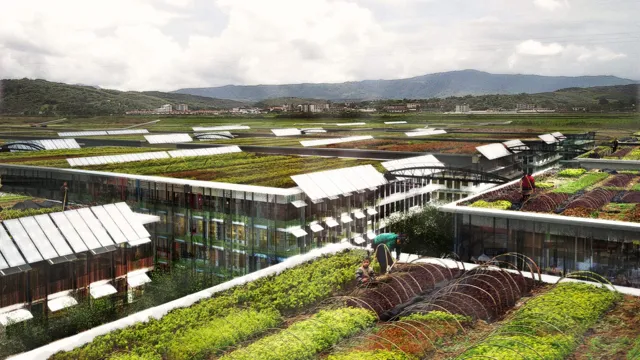
Historical Context
In the grand tapestry of history, rooftop farming solutions have emerged as a beacon of sustainability and innovation. They seamlessly blend the old-world charm of traditional agriculture with the cutting-edge technology of the future. The cityscape’s once grey, barren rooftops are now transformed into thriving green oases, breathing life into urban jungles.
This ingenious solution not only provides a source of fresh produce but also serves as a testament to humanity’s ability to adapt and thrive. Indeed, rooftop farming is more than a solution; it’s a testament to our resilience and ingenuity.
Types of Rooftop Farms
Type Description Suitability Advantages Challenges Greenhouse Farms Enclosed spaces for year-round farming with controlled Suitable for various crops Year-round production, controlled environment Initial setup cost, maintenance Rooftop space. Container Farms Uses containers or pots to grow plants, perfect for limited Suitable for space- Space-efficient, suitable for small rooftops Limited root space, drainage Water-efficient reduces weight load on the rooftop constrained rooftops issues Hydroponic Farms Soil-less farming using nutrient-rich water solution. Suitable for rooftop Water-efficient, reduces weight load on the rooftop Requires technical knowledge, initial investment Water-efficient reduces weight load on the rooftop farming, weight load compared to soil-based farming and operational costs Vertical Farms Utilizes stacked layers to grow plants vertically, maximizing Suitable for limited Maximizes space, increases production capacity Space on rooftops Ideal for reducing the weight load on rooftops and conserving Production capacity in a small area. This table provides a quick overview of each type of rooftop farm, including their description, suitability, advantages, and challenges. Container Gardens
Embracing rooftop farming solutions can transform your urban concrete jungle into a lush, green oasis. Container gardens are compact, versatile, and a perfect fit for rooftops, offering a sustainable solution to food production and green space in cities. This innovative approach to gardening not only adds aesthetic appeal but also contributes significantly to environmental conservation.
So, let’s ditch the conventional farming methods and elevate our green thumbs to the rooftops. It’s time to redefine agriculture, one container at a time!
Green Roofs
“Green Roofs: The Apex of Innovative Rooftop Farming Solutions” Burgeoning urbanization necessitates innovative solutions like rooftop farming, turning barren terraces into verdant retreats. Rooftop farming solutions are more than a flash-in-the-pan trend; they are a testament to human ingenuity, transforming concrete jungles into sustainable ecosystems. Imagine stepping out onto the roof, not to a view of soulless buildings, but to a lush, green oasis teeming with life.
From providing local fresh produce to reducing urban heat, these green roofs are a holistic approach to urban living. Indeed, rooftop farming solutions are not just sprouting possibilities; they’re seeding a green revolution.
Hydroponic Systems
Harnessing the power of hydroponic systems, rooftop farming solutions are revolutionizing the urban agricultural landscape. By cultivating crops atop buildings, city dwellers are transforming concrete jungles into green oases. Hydroponics, a soil-less farming method that utilizes nutrient-rich water solutions, has been a game-changer, enabling plants to thrive in confined spaces.
This innovative approach not only maximizes the use of vertical space but also reduces the carbon footprint, making it a sustainable and efficient farming alternative. So, let’s bid goodbye to the traditional notion of farms and embrace this forward-thinking notion of farming amidst skyscrapers.
Implementing a Rooftop Farm
Rooftop farming, an innovative solution that transforms urban rooftops into productive green spaces, has taken center stage in the realm of sustainable living. But how does one go about implementing such an eco-friendly venture? Firstly, it’s crucial to assess the structural integrity of the building. This is the foundation, quite literally, of any rooftop farming solutions.
An engineer can help determine whether the roof can withstand the additional load. Following this, it’s about choosing the right type of rooftop farming for your space and resources – hydroponic systems, container gardens, or green roofs. Planning is vital in this phase.
Mapping out your roof space, considering the sunlight exposure, and deciding on the kind of crops to grow are all part of the process. In addition, deciding on how you’ll manage water resources, considering the use of rainwater harvesting systems, can greatly enhance the sustainability of your rooftop farm. Finally, it’s about getting your hands dirty and starting the actual farming.
But remember, patience is a virtue in farming. It will take time for your rooftop oasis to flourish. Stay persistent and nurture your rooftop garden with the same passion you began it with.
Implementing a rooftop farm is more than just a trendy move toward sustainability. It’s a commitment to greener urban living, a step towards self-reliance, and a testament to the ingenuity of human innovation. It may seem like a daunting task, but with careful planning and execution, it can be one of the most rewarding endeavors you’ll undertake.
Choosing the Right Space
Selecting the perfect location for your farming endeavor is a crucial step. This is where rooftop farming solutions come into play. They ingeniously utilize unused spaces, transforming them into thriving green spaces.
These innovative solutions offer a sustainable alternative for urban farming, providing fresh, locally grown produce. But remember, not all rooftops are suitable, so careful assessment is essential. Consider factors such as load-bearing capacity, sunlight exposure, and accessibility.
With the right rooftop farming solution, you can create a flourishing, productive garden in the sky. So, let’s redefine farming and take it to new heights – literally!
Selecting Suitable Crops
“High above the hustle and bustle of city life, rooftop farming solutions are blossoming, transforming idle terraces into productive green spaces. Selecting suitable crops is the cornerstone of successful urban agriculture. Whether it’s hardy leafy greens defying the elements, or sun-loving tomatoes basking in the skyline, picking the right plants can turn your rooftop into an aerial Eden.
Imagine plucking fresh basil for your pasta sauce right from your rooftop – a gourmet experience that is sustainable, fun, and liberating. So, let’s dive into the world of green rooftops and discover how to harvest the sky!”
Challenges and Solutions
Challenges and Solutions in Rooftop Farming: Navigating the Skies of Urban Agriculture Navigating the realm of rooftop farming may seem like an uphill task, but don’t be daunted. Every challenge comes pre-packaged with its corresponding solutions, and rooftop farming is no different. One of the most pressing issues is the structural integrity of buildings.
Not every rooftop is designed to bear the weight of a full-fledged garden. However, technology provides an answer with lightweight soil substitutes and hydroponic systems. Another potential hurdle is the extreme weather conditions rooftops are subjected to, such as intense heat or wind.
The solution here lies in selecting hardy plant varieties that can withstand these conditions and implementing protective structures. Watering is also a significant challenge, as rooftops are typically far from water sources, making irrigation a laborious task. But innovative rooftop farming solutions, such as drip irrigation and self-watering containers, can streamline this process.
Rooftop farming may seem like a daunting task, but with the right solutions, it becomes a rewarding journey. So, strap on your gardening gloves and get ready to conquer the skies of urban agriculture.
Addressing Common Hurdles
Rooftop farming, a game-changer in urban agriculture, is not without its fair share of challenges. From structural and weight issues to access to sunlight and water, the hurdles are many. But fret not; for every problem, there’s a solution.
This blog section is dedicated to discussing ingenious rooftop farming solutions that help overcome these common obstacles. We’ll delve into innovative techniques, cutting-edge technologies, and smart strategies that not only address these issues but also enhance the overall efficiency and productivity of your rooftop farms. So, let’s navigate this high-rise farming landscape together, growing greener and smarter!
Innovative Solutions
As we propel into the future, innovative rooftop farming solutions are emerging as a beacon of sustainability, transforming our urban landscapes. These solutions are ingeniously designed to not only maximize space utilization but also promote organic food production, reduce carbon footprints, and enhance biodiversity in our concrete jungles. They are a testament to human ingenuity, cleverly merging technology and nature to solve pressing environmental issues.
So, let’s take a step into the future and explore these cutting-edge rooftop farming solutions that are turning grey skyscrapers into lush, green food factories.
Frequently Asked Questions
What are the benefits of rooftop farming solutions?
Rooftop farming solutions provide numerous benefits, such as reducing heat absorption, contributing to biodiversity, improving air quality, providing a source of local and fresh produce, and creating a peaceful space in urban environments.
How can one start implementing rooftop farming solutions?
To start implementing rooftop farming solutions, one must first assess the structural stability of the roof, followed by installing a waterproof membrane. Then, appropriate soil and plants can be selected based on local climate and personal preferences.
What are some challenges associated with rooftop farming solutions?
Some challenges associated with rooftop farming solutions include high initial setup costs, regular maintenance requirements, potential water leakage, and the need for regular inspections to ensure structural safety.
Are there any specific regulations for rooftop farming solutions?
Regulations for rooftop farming solutions vary from place to place. It’s important to check with local authorities or a legal expert before initiating a rooftop farming project.
Can rooftop farming solutions be used in residential areas?
Yes, rooftop farming solutions can be used in residential areas. However, it’s crucial to ensure the structural stability of the building and to follow local regulations and guidelines.
Conclusion
Rooftop farming is not just an innovative solution to the growing food demand but also a witty way of redefining urban spaces. It’s a clever and convenient concept, transforming concrete jungles into green, productive landscapes. It’s like wearing a green hat on a concrete head. In essence, rooftop farming is our ticket to achieving food sustainability and urban revitalization, turning the tables on traditional farming, one rooftop at a time. After all, why farm down when you can farm up?
-

The Basics of Water Pressure: What You Need to Know
Understanding the intricacies of your home’s water system can feel like an overwhelming task. However, one crucial component that should never be overlooked is the water pressure regulator. This unsung hero of your plumbing system plays a critical role in maintaining the balance of water pressure in your home, protecting your pipes from potential damage, and ensuring a consistent water flow.
In this comprehensive guide, we will delve into the world of water pressure regulators – what they are, how they work, and why they are so important for your home. Whether you’re a seasoned homeowner, a new property owner, or just someone with a thirst for practical knowledge, this article is designed to shed light on this often misunderstood plumbing component. So, gear up and let’s dive into the world of water pressure regulators.
What Are Water Pressure Regulators?
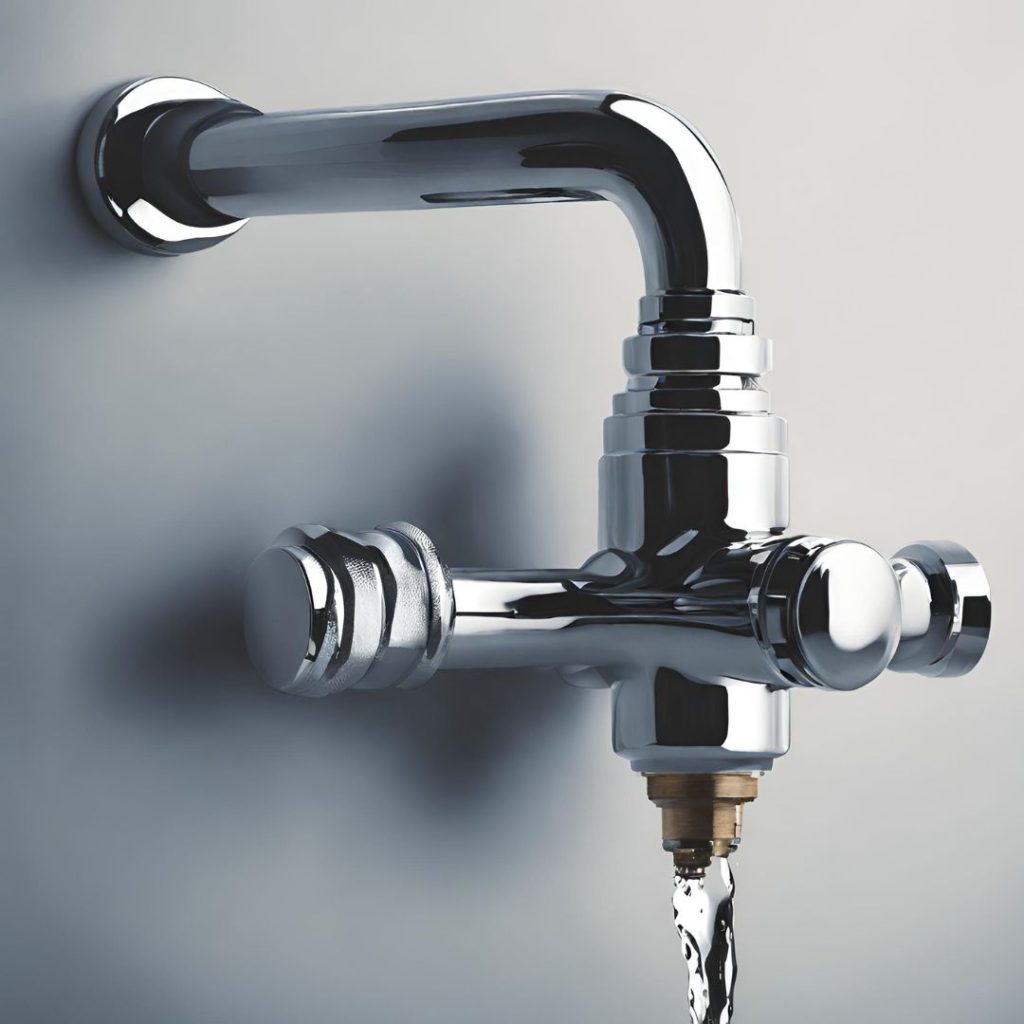
Water pressure regulators, as the name suggests, are ingenious devices that control and maintain a safe, consistent pressure level in your water supply. They act as sentinels, standing guard between the municipal water system and your home’s plumbing, ensuring the pressure of the water entering your home is kept at a manageable level. Without water pressure regulators, your home could be hit by the full force of the municipal water supply.
This could lead to damage to your appliances, burst pipes, and even flooding. They are the unsung heroes of your plumbing system, working tirelessly behind the scenes to protect your home and keep things running smoothly. These devices are typically installed where the main water line enters your home, and they are set to a default pressure level.
However, they can be adjusted if necessary to accommodate the specific needs of your home. Their operation is vital for the longevity of your appliances and plumbing system. In essence, water pressure regulators serve as a protective shield, preventing high-pressure water from wreaking havoc within your home.
They may not be the most glamorous part of your plumbing system, but they certainly are one of the most important. Without them, life could get a lot wetter, and not in a good way. So, here’s to the humble water pressure regulator, the silent guardian of your home’s plumbing system.
Concept of Water Pressure
Understanding the concept of water pressure and the role of water pressure regulators can be as intriguing as solving a complex puzzle. It’s about monitoring the force that propels water through our pipes, which, if too high, can lead to damaging leaks. Enter water pressure regulators – the unsung heroes of our plumbing system.
These nifty devices control the water pressure, ensuring it’s just right – not too high to cause damage, yet not too low to reduce functionality. They’re the guardian angels of our pipes, silently maintaining balance and certainly deserving of our appreciation.
Functioning of Pressure Regulators
Water pressure regulators, the unsung heroes of our plumbing systems, operate behind the scenes to maintain a steady, optimal water pressure level. They are the metaphorical gatekeepers, meticulously modulating the water flow. When the pressure from the public water supply is too high, the regulator jumps into action, reducing the pressure to a safer level before it reaches your plumbing fixtures.
This not only prevents damage to your pipes but also ensures a consistent water flow. Understanding the functioning of water pressure regulators can equip you with valuable knowledge to maintain your plumbing systems effectively.
What Are Water Pressure Regulators?
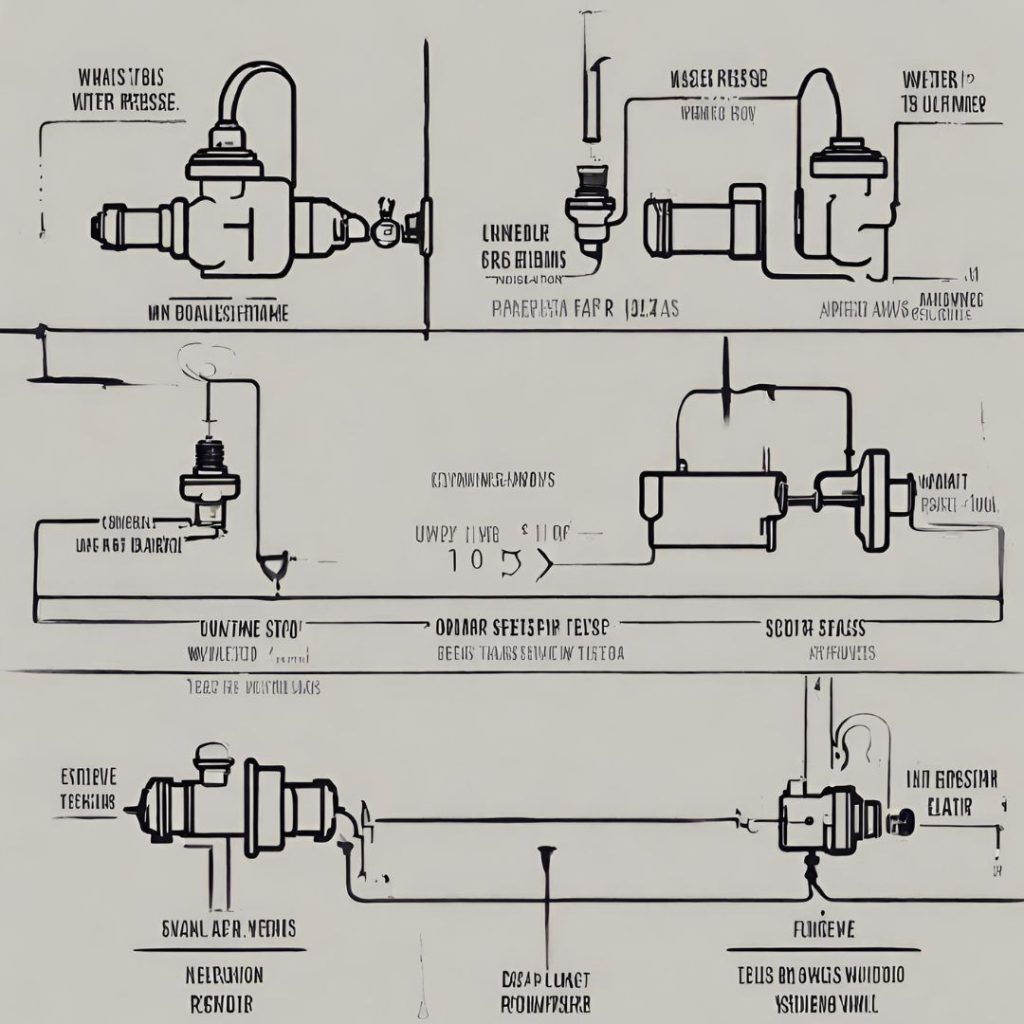
A Guide to Various Types of Water Pressure Regulators Water pressure regulators are silent heroes that guard the health of our plumbing systems. These critical components are the sentinels that keep a careful watch on the water pressure coursing through our pipes, ensuring it doesn’t skyrocket to potentially damaging levels. There are several types of water pressure regulators, each designed to tackle specific applications and plumbing arrangements.
The most common type is the direct-acting regulator. This model operates using a simple spring and diaphragm mechanism, making it an affordable and reliable option for most residential and commercial settings. Pilot-operated regulators are another type ideal for larger applications where stability and accuracy are paramount.
They employ a two-part system consisting of a pilot valve and a main valve. Together, they work to maintain a constant outlet pressure despite variations in inlet pressure or flow rate. Another variant is the pressure-reducing valve (PRV).
This type of regulator reduces incoming water pressure to a safe level before it reaches any plumbing fixtures within a property. Lastly, we have the integral bypass type. These regulators have a built-in bypass valve that allows excess water pressure to be diverted, providing an extra layer of protection.
Regardless of their differences, all types of water pressure regulators share the same goal: to maintain an optimal, safe water pressure level within our plumbing systems. By understanding the different types, you can make an informed decision about which regulator is best suited to your needs.
Adjustable Pressure Regulators
Adjustable water pressure regulators are an unsung hero in our daily lives, quietly maintaining the ideal water pressure in our homes and businesses. These clever devices keep your plumbing system humming along smoothly, preventing the headache of burst pipes or leaky faucets. They are the silent guardian, the watchful protector of your water supply.
So, let’s dive into the world of adjustable water pressure regulators, shedding light on their crucial role and how they manage to keep your water pressure just right. Because, in the battle against water pressure woes, these regulators are the superheroes we all need.
Non-adjustable Pressure Regulators
Non-adjustable water pressure regulators are often the unsung heroes of plumbing systems. These devices are designed to maintain a constant output pressure, providing a stable water flow in various applications. They may not come with adjustable settings, but their precision and reliability make them indispensable.
Think of them as the stoic gatekeepers of your plumbing system, unfazed by fluctuations and ensuring the water pressure is always just right. In essence, non-adjustable water pressure regulators are the epitome of ‘set it and forget it’ functionality, offering a straightforward solution to pressure regulation that is both efficient and effective.
High-flow Pressure Regulators
Navigating the world of water pressure regulators can feel like traversing a technical labyrinth. Fear not, as we’re here to shed light on the high-flow pressure regulator, a crucial component of this intricate puzzle. These regulators are akin to superheroes, protecting your water systems from the villainous high pressure, ensuring smooth and efficient flow.
They are the unsung heroes maintaining balance in your water systems, and keeping your appliances safe from sudden pressure surges. So, let’s delve deeper into the world of high-flow pressure regulators, unraveling their intricate workings and their paramount importance in our everyday lives.
Choosing the Right Regulator
Selecting the Perfect Water Pressure Regulators: Your Guide to an Optimal Water Flow Understanding the mechanics and intricacies of water pressure regulators may seem like a daunting task. However, this guide aims to simplify the process, helping you navigate the sea of choices to find the right regulator for your needs. Water pressure regulators, also known as pressure-reducing valves, are critical devices designed to control and stabilize the water pressure in your plumbing system.
They ensure that the water pressure is at a safe level, preventing damage to your pipes and appliances. Choosing the right water pressure regulators involves assessing your specific requirements and understanding the capacity and specifications of different models. Factors such as the size of your plumbing system, the water flow rate, and the maximum pressure your system can handle all play a crucial role in determining the appropriate regulator.
Moreover, while price is an important consideration, remember that a more expensive regulator is not necessarily better. Instead, focus on the quality, durability, and suitability of the regulator for your system. It’s also crucial to consider the regulator’s ease of installation and maintenance.
In the world of water pressure regulators, there is no one-size-fits-all solution. It’s all about identifying your unique needs and finding a regulator that can meet them effectively. Armed with the right knowledge and a clear understanding of your requirements, you can make an informed decision and choose a water pressure regulator that ensures optimal water flow in your system.
Size and Capacity Factors
Understanding the Size and Capacity Factors of Water Pressure Regulators Navigating the world of water pressure regulators can be a complex task, especially when it comes to size and capacity. Crucial yet often overlooked, these factors can significantly influence the efficiency and functionality of your water systems. The size of your regulator should align with your pipeline, while the capacity should correspond to your water usage.
A mismatch can lead to system strain, inconsistent water pressure, and potential damage. Remember, in the realm of water pressure regulators, size and capacity are not just numbers, they are vital determinants of your system’s performance and longevity.
Material and Durability Aspects
Material and durability are crucial aspects to consider when selecting water pressure regulators. These devices, subjected to constant water flow and varying pressures, need robust construction to withstand the test of time. Most regulators are made from brass or stainless steel, known for their strength and corrosion resistance.
However, the durability isn’t solely dependent on the material but also the quality of the internal components. Hence, it’s essential to select a regulator with a solid build, reliable seals, and sturdy springs. After all, a well-built water pressure regulator isn’t just an investment, it’s a guard against potential water damage.
Installing and Maintaining Regulators
Section Title: The Art of Installing and Sustaining Water Pressure Regulators Water pressure regulators, the unsung heroes of our plumbing system, perform an essential function in our daily lives. These devices, often overlooked, control the water pressure in our homes and businesses, ensuring a steady flow and preventing damaging high-pressure surges. Installing a water pressure regulator is a task that demands precision and a fair degree of technical know-how.
It’s akin to performing a symphony, where each part has to be in perfect harmony with the other. The process involves identifying the incoming water line, shutting off the water supply, and installing the regulator following the manufacturer’s instructions. It’s a dance between man and machine, a dance that, when perfectly executed, results in a well-regulated water supply.
Maintaining your water pressure regulator is equally important. Like a finely tuned instrument, it requires regular check-ups to ensure optimal performance. This includes monitoring for signs of wear and tear, checking for leaks, and adjusting the pressure settings as needed.
Remember, these regulators are not just pieces of metal. They’re the guardians of your plumbing system, silently working to protect your appliances, control your water flow, and, ultimately, save you money. So, don’t take them for granted.
Learn to install and maintain your water pressure regulators correctly, and they’ll serve you faithfully for years to come.
Step-by-Step Installation Guide
In this section, we’ll delve into a comprehensive, step-by-step installation guide for water pressure regulators. We’re not just going to provide you with dry instructions, but rather, we’ll sprinkle in some wit and clever explanations to keep it engaging. We understand that technical guides can sometimes feel like a chore, but we’re here to make this process an enjoyable learning experience.
So, let’s gear up and get acquainted with the art of installing water pressure regulators, making sure your water pressure is always just right.
Maintenance and Troubleshooting Tips
Keeping your water pressure regulators in top-notch condition can be a breeze with the right maintenance and troubleshooting tips. Careful attention to detail can help you spot any abnormalities in your water pressure, preventing minor issues from escalating into costly problems. Regular cleaning, timely replacements, and routine inspections can ensure the longevity and efficiency of your water pressure regulators.
If you’re faced with a sudden pressure drop or an unexplainable surge, don’t panic. These scenarios often have a simple fix, requiring nothing more than a little patience and a keen understanding of your regulator’s operations. Remember, a well-maintained water pressure regulator is key to a hassle-free water supply.
Frequently Asked Questions (FAQs)
What is the main function of a water pressure regulator?
A water pressure regulator is a valve that automatically cuts off the flow of a liquid or gas at a certain pressure. It is mainly used to control the pressure of the water coming into the home from the public water supply.
How do I know if my water pressure regulator is bad?
Some signs that your water pressure regulator may be faulty include varying water pressure, high water pressure, low water pressure, no water pressure, or even water leaks.
How often should you replace a water pressure regulator?
It is generally recommended to replace a water pressure regulator every 10-15 years. However, if you are experiencing problems with your water pressure, it might be worth having a professional inspect the regulator to determine if it needs to be replaced sooner.
Can a water pressure regulator increase water pressure?
No, a water pressure regulator cannot increase water pressure. It is designed to reduce and control the water pressure. If you have low water pressure, there may be other issues in your plumbing system that need to be addressed.
What happens if a water pressure regulator fails?
If a water pressure regulator fails, it can cause high or low water pressure, inconsistent water flow, and in worst cases, it can even cause damage to your plumbing fixtures and appliances due to the extreme pressure changes.
Is it hard to replace a water pressure regulator?
The difficulty in replacing a water pressure regulator varies depending on your level of expertise with plumbing. It may be a simple task for a professional plumber, but for a homeowner with little to no experience, it could be quite challenging.
Conclusion
Water pressure regulators are the unsung heroes of our plumbing systems. They are the unseen knights guarding our pipes, ensuring they are not overwhelmed by the brute force of high water pressure. They are the conductors of the underwater symphony, subtly adjusting and tuning the flow to maintain harmony.
So next time you enjoy a perfect shower or efficiently run your dishwasher, spare a thought for the humble water pressure regulator, quietly keeping the peace in the world of waterworks.